|
Continental Motors in World War Two
Muskegon, MI
(Currently Mobile, AL)
1902-Current
This page updated 11-3-2020.
Continental Motors is most well-known for its
production of the R-975 radial aircraft engine, used in M4 and M4A1
Sherman tanks during World War Two. While the Continental
Motors-produced R-975 was used in a myriad of other American armored
vehicles during the war, it is the Sherman tank engine for which the company
is most associated. There is good reason
for this in that the M4 and M4A1 Sherman tanks served throughout the war
and was with the American Army on every battle front. The
Continental Motors-powered Shermans were with the U.S. Army in North
Africa, Italy, Normandy and all the way to through France, Luxembourg,
Belgium, Holland and Germany until V-E Day. In the Pacific, the M4
and M4A1 Sherman tanks were such places as New Guinea, the Philippines,
the Marianas, Peleliu and Okinawa. U.S. Marines used them
at Cape Gloucester, Bougainville and the Admiralty Islands. The
M4/M4A1 Sherman tanks with their Continental-built engines were found worldwide with
the American Armed Forces throughout World War Two.
The first Sherman tank ever produced was a
M4A1(75)VVSS, assembled by the Lima Locomotive Works in February 1942.
It came with a Continental R-975 engine. Production of the Continental Motors R-975 powered
Sherman tanks continued until August 1945 with the M4A1(76)HVSS. The Continental-powered M4A1 Sherman
tank had the longest production run of the different Sherman tanks
during World War Two.
Continental Motors produced more than just
Sherman tank engines during World War Two. Its engines were used
in self-propelled artillery, tank destroyers, trucks and aircraft.
Continental was a very important supplier of power plants to the U.S.
Military in World War Two.
One of the most interesting things about
Continental Motors during World War Two is the fact that it built four
engines under
license from other manufacturers. There was the
Wright R-975 that was used in the M4 and M4A1 Sherman tank and several
other tracked vehicles. It also built the Pratt & Whitney R-1340 that powered the T-6 and SNJ Texan trainer
aircraft. Towards the end
of the war, it built the Rolls-Royce Merlin aircraft engine that was used
in the P-51 Mustang. Late in the war Continental also started
producing the Ford GAA engine for the M4A3 Sherman tank. While
other companies in the auto industry built at most one aircraft engine
under license, only Continental had the honor of building four in this manner. At the same, time it also built
several engines of its
own design for the war effort.
The story of Continental Motors started in
1902 and continues today, with production facilities at Mobile, AL.
The company has built many engines for all sorts of products from tanks
and military aircraft to garden tractors. In 1933-34 Continental
came out with its own line of automobiles which was to employ 4,000
workers in Muskegon, MI, and another 1,000 in Detroit. It appears
that it only sold 6,500 cars in 1934 which was just not enough to keep the
project going. Continental has many engines for many different
applications over its lifetime. This webpage will focus on its
important contribution to winning World War Two. But first, this
page will look at some early Continental engines. Next will be the pre-World War Two tanks it powered that led to its success in World War Two.
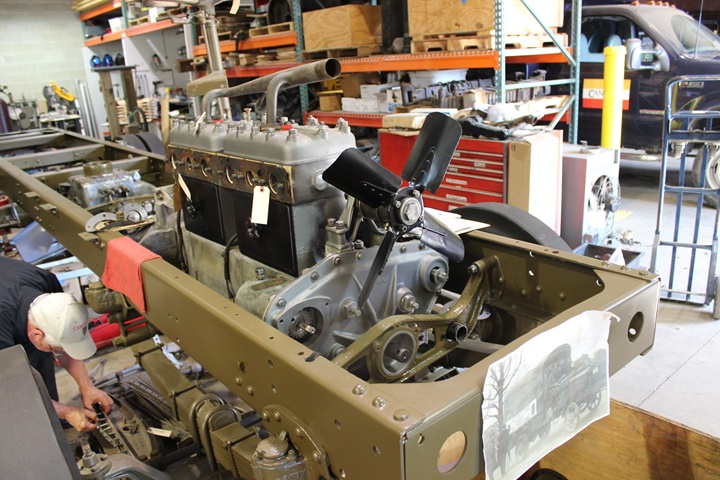
In 2015 this World War One Liberty truck
chassis and drive train were undergoing restoration at the First
Division Museum in Wheaton, IL.
Continental Motors was one of five companies that provided engines for
the standardized Liberty Truck built by fifteen manufacturers to U.S.
Army Quartermaster specifications. The engine shown here is a
Continental. Author's photo added 11-3-2020.
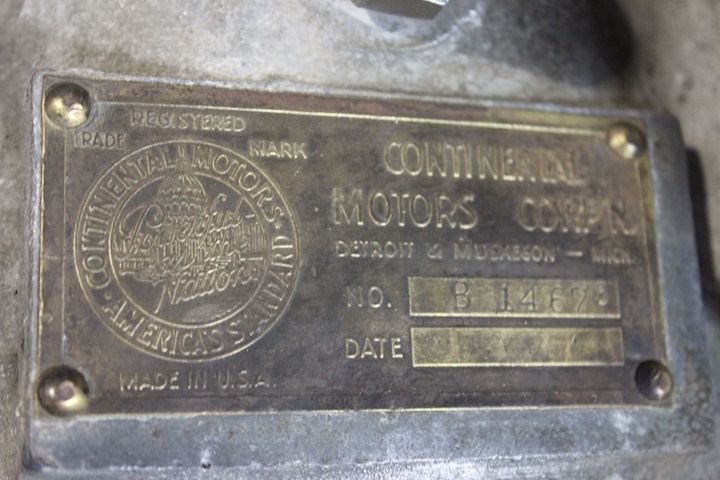
Continental produced 50% of the Liberty
truck engines during World War One. It also provided the
standardized drawings used by the other four manufacturers.
Author's photo added 11-3-2020.
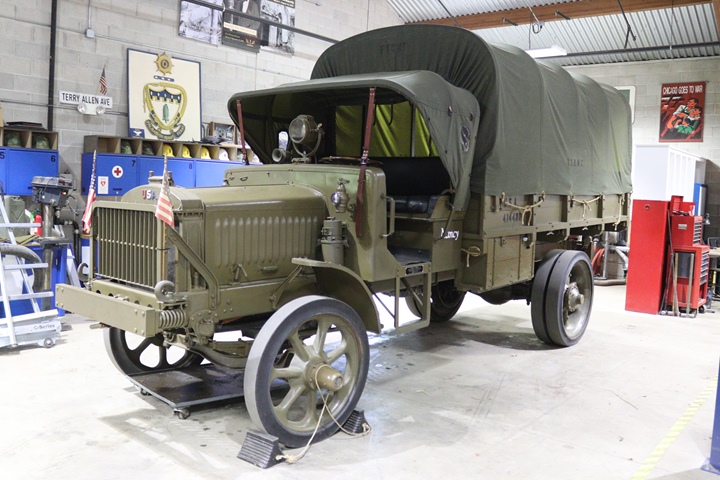
This is what the Liberty truck looked like
after it was restored. This is June 2019. Author's photo
added 11-3-2020.
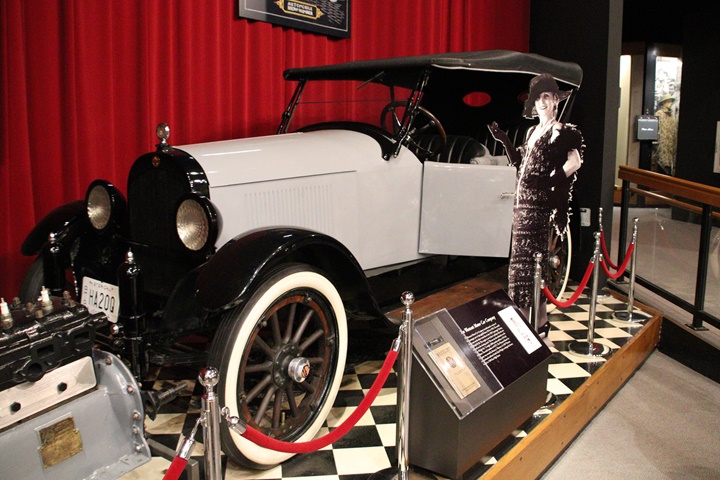
This is a 1920 Westcott five-passenger
touring car, model B-38. It was built in Springfield, OH and is on
display at the Clark County Heritage Center Museum, Springfield, OH.
It was powered by a Continental Model 105-7R six-cylinder inline engine.
Author's photo added 2-7-2020.
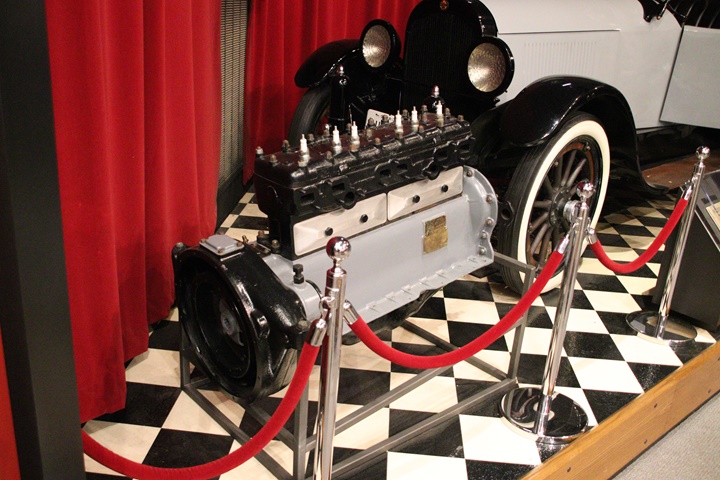
This is one of the oldest Continental
engines on display in a museum. Author's photo added 2-7-2020.
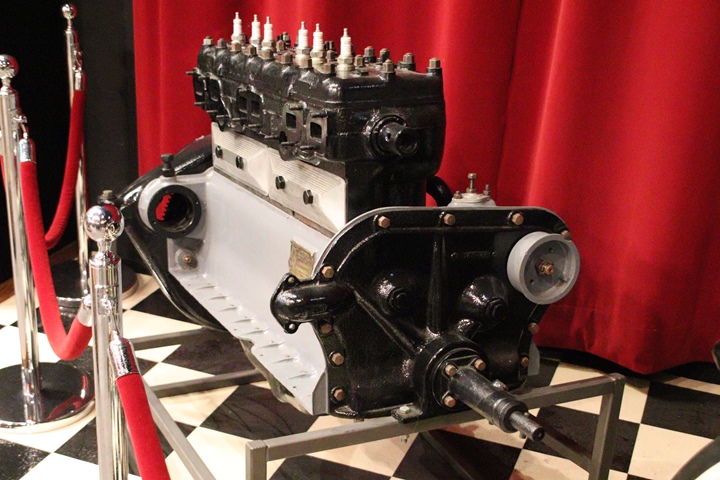
Author's photo added 2-7-2020.
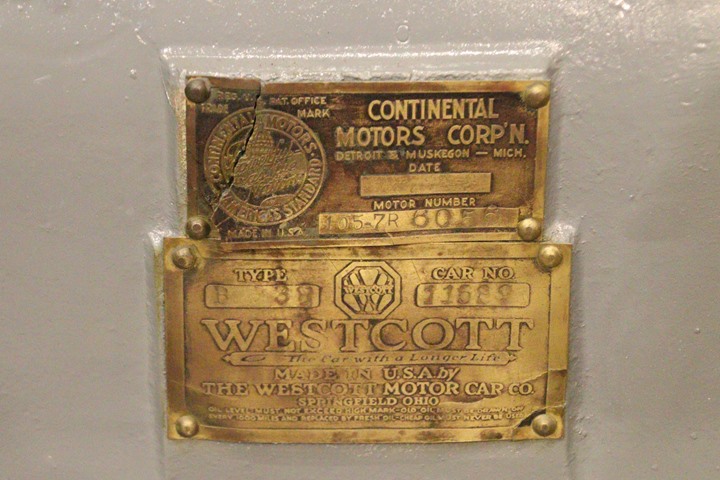
The serial number for the Continental 105-7R
is 6056. Author's photo added 2-7-2020.
Pre-World War Two Tanks: Tank
development was sparse during the 1920s and 1930s due to indifference on
the part of army management. After the depression started, there
was a lack of funding. The Rock Island Arsenal in Illinois was the
Army's arsenal for building what few tanks were funded before the start
of World War Two. Production stopped at Rock Island in 1941and shifted to commercial companies
in order to build the huge number of tanks needed for the war effort.
Continental approached the U.S. Army Ordnance
in 1931 about converting its R-670 radial aircraft for use in tanks.
The company had developed over several years from its A-70 seven-cylinder
radial aircraft engine with 165 hp. Army Ordnance was in agreement
with this, so Continental was tasked with converting the
aircraft engine for use in tanks. Continental referred to this
modified tank version of the engine as the W-670, but in today's
literature it is normally known as the R-670. The first
application of the Continental W-670 engine was in the M1 Combat Car
built by Rock Island Arsenal in 1932. With the installation of the
W-670 engine into the M1 Combat Car, Continental became the only
supplier of the preferred radial tank engine for both light and medium
American tanks until engines produced by the American auto industry
superseded it in the middle of World War Two. Continental Motors
W-670 and R-975 engines would see worldwide service throughout World War
Two.
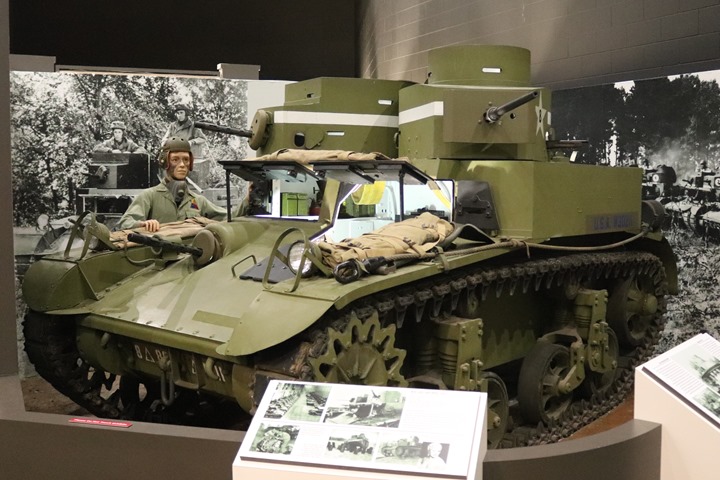
The M2A2 light tank was powered by a
Continental W-670 engine. Seventy-three were built. This one
is on display at the Mississippi Armed Forces Museum at Camp Shelby, MS.
Author's photo.
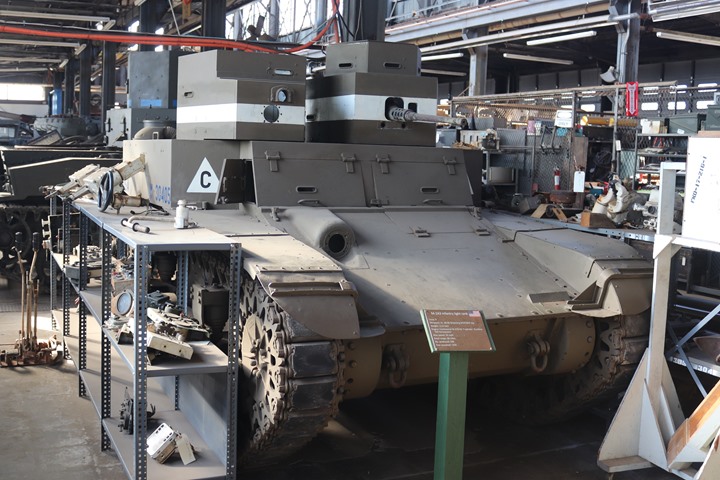
The
M2A3 was a M2A2 that was converted to an infantry tank in 1935 and
retained the W-670 engine. Several tanks at the end of the M2A2
production run were converted. Author's photo from the U.S. Army
Armor and Cavalry Collection at Fort Benning, GA.
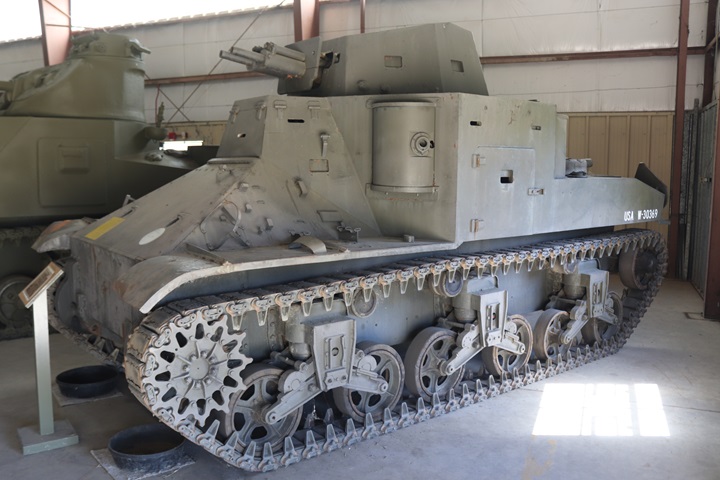
This
T5E1 was the only one produced by Rock Island and was the first of what
became the M2 series medium tanks. It weighed 15 tons and was
armed with two 37mm main guns and four .30 caliber machine guns.
Built in 1937, it was powered by the Continental R-975 radial engine.
Note the similarities between this tank and the M2A1 below. They
look very much alike, but the M2A1 is six tons heavier. Author's
photo.
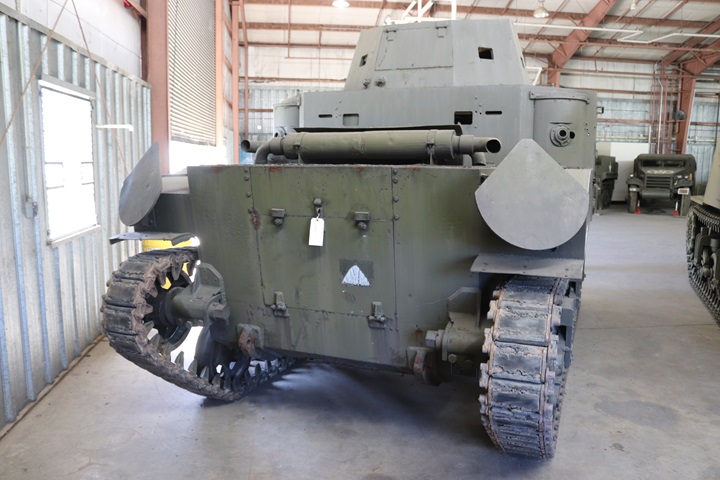
Note the machine gun reflectors over the
rear of the tracks. The idea behind these was that after the tank
rolled over an enemy's trench work or foxhole, the rear gunners could
fire the machine guns at the reflector plates which would deflect the
bullets down and into any enemy soldiers in the trenches.
This was all based on World War One trench warfare. The German
invasion of France showed that the tanks were fighting a different war.
Author's photo.
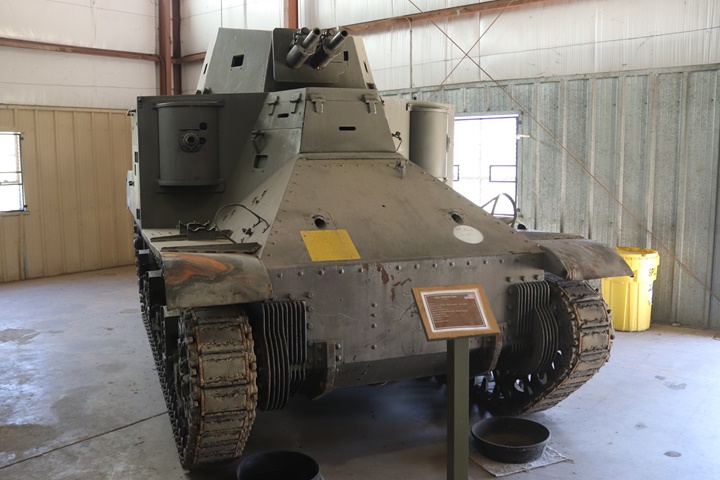
Author's photo.
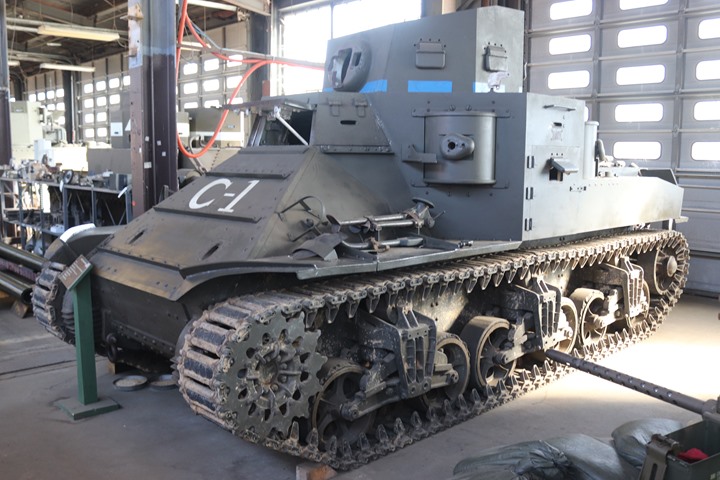
This is a 1939 M2A1 Medium tank, forerunner of the M3 and M4 medium
tanks. It was photographed in the restoration area of the U.S.
Army
Armor and Cavalry Collection at Fort Benning, GA. The M2A1,
weighing in at almost 21 tons, needed a larger engine than the smaller
previous light tanks. Continental was responsible for modifying the
larger Wright R-975 aircraft engine for use in tanks. This was the
first of over 54,000 Continental-built R-975 engines that would be used
in over 34,000 tanks and other armored vehicles during World War Two.
Author's photo.
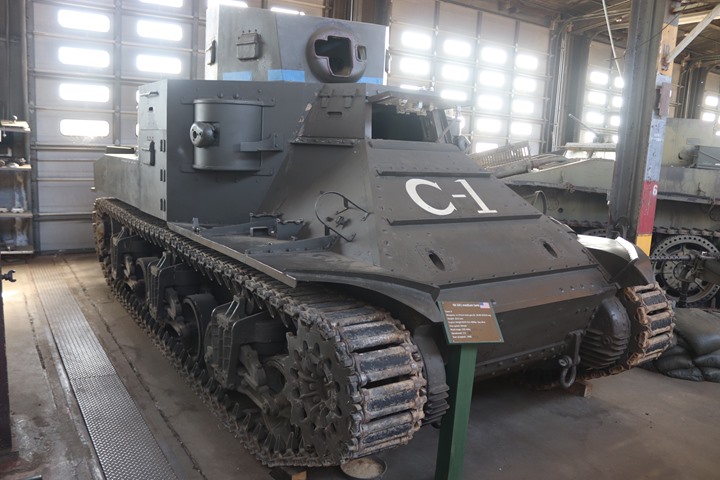
The 37mm main gun and .30 caliber machine gun in the turret have been
removed during the restoration.
Author's photo.
Author's note: This was the medium tank with which the
U.S. Army originally planned to go to war with. After 94 of them were produced
by Rock Island Arsenal, production was passed on to
Chrysler to build at the new Detroit Tank Plant in what was then
Centerline, MI, and now Warren, MI. Within a short time, cooler heads
prevailed. The M2A1 was cancelled, and the M3 Lee/Grant tank took its
place. No M2A1 medium tanks were ever produced at the Detroit Tank
Plant. The M2A1 was armed with one 37mm main gun and eight .30
caliber machine guns. Lessons learned from the tank warfare going
on in Europe made the 37mm gun inadequate for modern warfare. The
M3 Lee/Grant had the more effective 75mm cannon for its main armament.
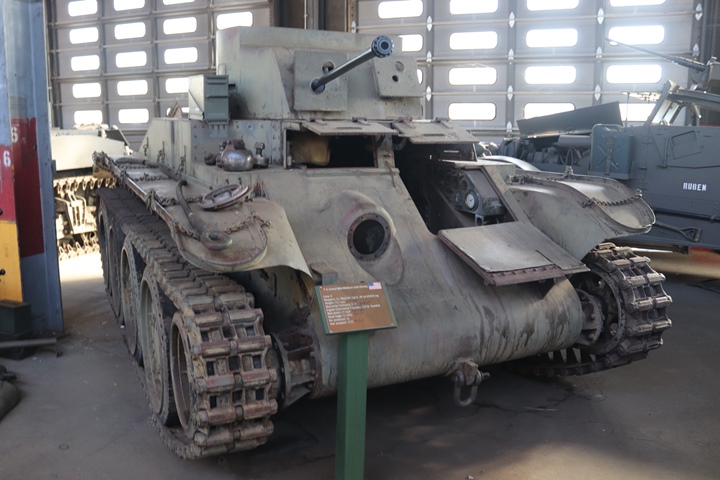
Besides the Army's Rock Island Arsenal,
several companies attempted to get into the tanks business in the 1930s.
One of the most prominent was Walter Christie. He had several
tanks of various design which were evaluated by the U.S. Army in the
early 1930s. This 1932 T4 convertible medium tank was built by the Rock
Island Arsenal using Christie suspension. It was powered by
the Continental W-640 engine and is one of 16 produced in 1932.
Author's photo from the U.S. Army Armor and Cavalry
Collection at Fort Benning, GA.
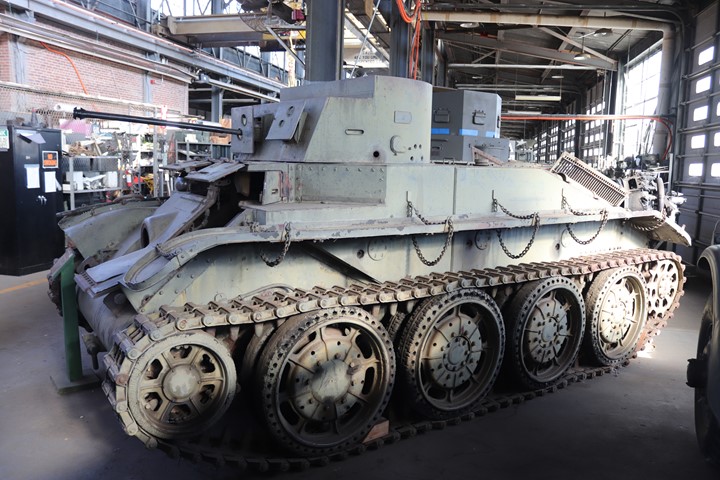
The term "convertible" is used in the tank's
description because the tracks could be removed, and the vehicle
converted to an armored car that ran on the large rubber-coated road
wheels. Author's photo.
World War Two:
In 1902, 20-year old Ross Judson started a small machine shop on South
Clinton Street in Chicago to build small combustion engines. The small
company grew and expanded and moved several times while in the Chicago
area. In 1905, the company, as Continental Motors, moved to Muskegon, MI where
it was able to obtain favorable conditions from the Chamber of Commerce to continue its business.
A new 16,000 square foot factory was built at the corner of Market and Water Streets in downtown Muskegon
near Lake Michigan. During World War Two, the company had three plants in
Michigan and one in Texas. These four plants would produce over
131,000 tank and aircraft engines of ten different types during the war.
This is comparable to amount of aircraft engines Curtiss-Wright and
Pratt & Whitney produced during the war.
Continental was in the big three of World War Two engine production in
the United States.
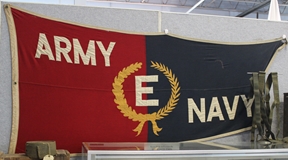
The Continental Motors Detroit, MI plant won
the Army-Navy "E" Award two times.
The Continental Motors Muskegon Plant won the Army-Navy "E" Award one
time.
|
Continental
Production World War Two Production Plants |
|
Plant Location |
Products |
Comments |
|
Downtown Muskegon, MI |
W-670 parts and final assembly, R-670 220 hp
radial aircraft engine parts and final assembly,
O-170/A65 four-cylinder aircraft engine parts and final
assembly, R-600 six- cylinder 230 hp Inline engine parts and final assembly |
|
|
Getty Street Plant
Muskegon, MI |
R-1340
aircraft engine parts and final assembly, V-1650-7 Merlin
V12 aircraft engine parts and final assembly, I-1430 parts
and final assembly |
Construction on this $5 million Government-built plant to
produce aircraft engines began in July 1941. One
of the main products was to be the I-1430 twelve-cylinder,
1,000 hp engine for Army Air Forces fighter aircraft.
This engine project never came to fruition. |
|
Detroit, MI |
R-975
parts and final assembly, GAA parts and final assembly |
In November 1940 this plant underwent a $8 million
renovation and retooling project to produce the R-975
engine. By the
fall of 1944, only one third of the plant was necessary to
produce the needed R-975 engines and spare parts. At
that time, retooling began for production of the GAA engine.
At its peak, this plant employed 5,000 persons. |
|
Garland, TX |
R-975
parts and final assembly, GAA pistons, cylinder sleeves and connecting rods |
This government-owned plant was originally built to produce
the Guiberson diesel medium tank engine. This project
was cancelled February 1942. Continental then leased
the building from the government in September of the same
year, and re-tooling began for production of the R-975.
In late 1944 it began tooling-up for producing parts for the
GAA engine. |
|
Continental Engines Built during World War Two |
|
Engine type |
Number Built |
Plant Location |
Applications |
Comments |
|
Ground Vehicle Engines |
| R-975
Nine Cylinder 420 hp Radial Tank Engine |
54,104 |
Detroit, MI Plant and Garland, TX |
(4,424) M3 Lee/Grant Tanks, (300) M3A1 Lee/Grant Tanks, (12)
M3A2 Lee/Grant Tanks, (8,389) M4 Sherman Tanks, (9,707) M4A1
Sherman Tanks, (188) M4A1 Grizzly Tanks, (6) T7E2 Medium
Tank Prototypes, (7) M7 Medium Tanks, (50) Ram I Tanks,
(1,815) Ram II Tanks, (84) Ram II Observation Posts, (2,507)
M18 Hellcat Tank Destroyers, (3,490 ) M7 Priest Gun Motor
Carriages, (2,150) Sexton Gun Motor Carriages, (100) M12
Motor Gun Carriages, (418) M40 Motor Gun Carriages, (100)
M30 Cargo Carriers, (40) M39s, (24) M43 Motor Gun Carriages |
The total usage was of the Continental R-975 was 33,811
engines. This allowed for 20,293 engines for spares.
The R-975 was produced from 1941 through 1945. By the
fall of 1944, only one third of the plant was necessary to
produce the needed R-975 engines and spare parts. At that
time, retooling began for production of the GAA engine. At
its peak, this plant employed 5,000 persons.
Note: The first 500 production M3 Lee/Grant tanks had Wright-built R-975
engines. See the note below this table.* |
| W-670 Seven
Cylinder 250 hp Radial Tank Engine |
30,000 |
Downtown Muskegon, MI |
(365) M2A4 Light Tanks, (4,526) M3 Light
Tanks, (4,410) M3A1 Light Tanks, (3,427) M3A3 Light Tanks,
(2,962) LVT-2s, (510) LVT(A)-1s, (450) LVT(A)-2s, (1,890)
LVT(A)-4s, (8,351) LVT-4s |
The total usage
was of the Continental W-670 was 26,891 engines.
The history of Continental only shows 15,000 W-670 engines
being built. My analysis based on the known
applications is more than 11,500
more than the 15,000. This does not include any spare
engines. The build must have been at
least 30,000 engines. |
| R-600 Six
Cylinder 230 hp Inline Engine |
12,000 |
Downtown Muskegon, MI |
(5,290) M5 High
Speed Tractors, (582) M5A1 High Speed Tractors, (1) M5A3
High Speed Tractors, (5,765) M1 and
M1A1 10-Ton Wreckers, (?)Fire Trucks |
The total usage
was of the Continental R-600 was 11,628 engines.
I will estimate the company built 12,000 to include spares.
|
| GAA 1000 cu.in.
500 hp V8 Tank Engine |
~20 |
Final assembly
was at the Detroit plant.
Garland, TX supplied pistons, cylinder sleeves and
connecting rods.
Muskegon, MI built the camshafts and crankshafts for the GAA
engine. |
M4A3 Sherman
Tank |
Tooling began in
fall 1944. A very small number were built starting
February 1945. First deliveries occurred in July 1945
and the war ended a month later. The few that were
completed by war's end were insignificant compared to all of
the other engines the company delivered during World War
Two. |
|
Y112 Four Cylinder Gasoline Engine |
567 |
Downtown Muskegon, MI |
LeTourneau D4 Airborne Turnapull
scraper |
There may have been more uses for this engine during the
war. It is unknown. |
|
Aircraft Engines |
| R-1340 |
5,100 |
Getty Street
Plant, Muskegon, MI |
T-6, SNJ |
The R-1340 was
produced from April 1943 through November 1944. A
resumption of this contract was restarting when the war
ended. |
| V-1650-7 Merlin
V12 Aircraft engine |
797 |
Getty Street
Plant, Muskegon, MI |
P-51 |
A contract was
signing in February 1944 to produce 8,500 V-1650 Merlin
aircraft engines. Fifteen Million dollars were needed
to tool up the Getty Street plant for the engine. The
V-1650 was produced from July 1944 through May 1945.
The contract was cancelled at the end of May 1945.
Continental history indicates that a third or 2,800 engines
had been delivered. Army Air Force records show only
797 being accepted. |
| O-170/A65
four cylinder engines |
16,977 |
Downtown Muskegon, MI |
(5,611) Piper
L-4s and (230) NE-1s, (1,439) Aeronca L-3s, (1,942)
Taylorcraft L-2s |
16,977 O-170/A65 engines are credited to Continental by Army
Air Forces. 9,222 are known to have been used in the
four aircraft described to the left. |
| R-670 220 hp
Radial Aircraft Engine |
11,828 |
Downtown Muskegon, MI |
(3,519
) PT-17s |
11,828 R-670 aircraft engines are credited to Continental by
Army Air Forces. 3,519 are known to have been used in
the PT-17 aircraft described to the left. There were
several other versions of this type aircraft, but they used
engines from different manufacturers. |
| I-1430
1000 hp twelve cylinder Aircraft Engine |
23 |
Getty Street
Plant, Muskegon, MI |
(2)
McDonnell XP-67 twin-engine interceptors. |
This aircraft was known as the "Bat" or "Moonbat." It
probably sounded like a good idea at the time, but it never
worked out. |
|
Total |
131,416 |
|
|
This is an estimate total based on the known information.
This was a lot of engines. |
*Note: On September 9, 1940,
Continental Motors signed a contract with Army Ordnance to build R-975
engines at a rate of 200 per month by October 1941. Several days
later the company was asked to pull that schedule forward to meet the
production of M3 medium tanks that would be coming off several assembly
lines in early 1941. No doubt there were several other requests to
start production earlier than October 1941 and at higher run rates.
Continental actually started production in a record seven months in May
1941 which would have been in time for the first M3s coming off the
assembly lines a month later. The ramp-up of the M3 tank build was
aggressive and impressive. In order to meet the production
schedules for the combined M3 and M4 series medium tanks shown below,
Army Ordnance obtained 500 Wright-built R-975s to fill the gap as
Continental came up to full production. Continental did develop
enough capacity to supply all of the engines needed for M4/M4A1
production.
The table below shows the number of R-975s
needed from June 1941 to September 1942. In October 1941
Continental Motors took over supplying the R-975 engine for the M3.
It supplied 4,736 engines for the M3 Lee/Grant tanks and all of the
R-975 applications after this. Note that in May 1942 a total of
689 R-975 engines were needed to keep both the M3 series and M4 series
production lines operating. By this time Continental was able to
supply engines for both types of tanks in the quantities needed.
|
Demand for R-975 Engines for the M3 Medium tank series and early
M4/M4A1 production |
| |
6-1941 |
7-1941 |
8-1941 |
9-1941 |
10-1941 |
11-1941 |
12-1941 |
1-1942 |
2-1942 |
3-1942 |
4-1942 |
5-1942 |
6-1942 |
7-1942 |
8-1942 |
9-1942 |
Total |
| M3,
M3A1, M3A2 |
10 |
26 |
80 |
193 |
249 |
309 |
475 |
537 |
522 |
609 |
587 |
578 |
596 |
387 |
78 |
0 |
5,236 |
| M4,
M4A1 |
0 |
0 |
0 |
0 |
0 |
0 |
0 |
0 |
1 |
11 |
59 |
111 |
23 |
174 |
323 |
340 |
1,042 |
|
Total |
10 |
26 |
80 |
193 |
249 |
309 |
475 |
537 |
523 |
620 |
646 |
689 |
619 |
561 |
401 |
340 |
6,278 |
An estimate of Continental's average rate of
production can be made. In the fall of 1944 the Detroit plant was
running at one third capacity to fulfill its orders for the Pressed
Steel-built M4A1(76)s of around 200 per month and M18 production of 150
per month. This totals 350 per month. Multiplying by three
gives an approximate full capacity of 1,050 R-975 engines per month.
Another way to figure this is to assume in
October 1944 the production schedule was cut back to the one-third
level. There were another 1,879 Pressed Steel M4A1(76)s that were
built through July 1945. 157 M18s needed engines in October 1944.
Therefore another 2,036 R-975 engines were needed. Subtracting
this from the total 54,104 R-975s built by Continental during the war
equals 52,068. Continental built 4,736 of the M3 medium tank
engines. Subtract this from 52,068 to give the number of engines
Continental built from January 1942 through September 1944. This
is 47,332. Divide this by 33 months to get the R-975 average
monthly production between January 1942 through September 1944.
This gives an estimated average of 1,434 units per month.
Therefore, Continental was able to produce well in excess of 1,000
engines per month during World War Two when it was fully tooled up.
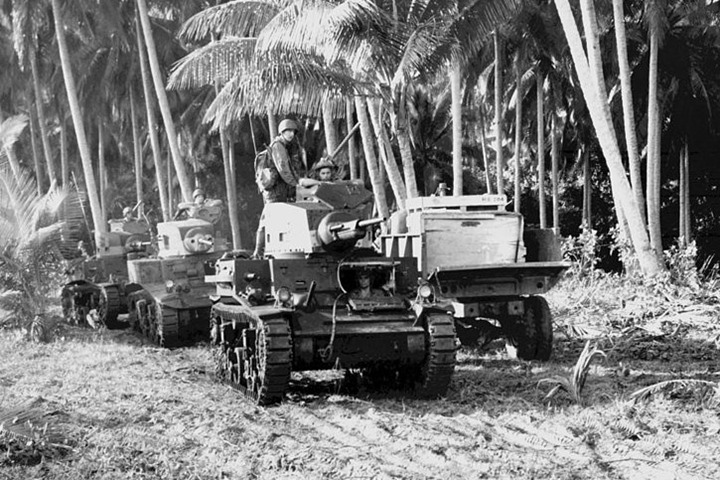
American Car and Foundry built 365 M4A2
light tanks and 12,263 M3 Stuart light tanks powered by the Continental
Motors W-670 tank engines. The photo above shows an M3 in road
march between two M2A4s on the island of Guadalcanal. Continental
engines were in the thick of the fighting during World War Two.
Using a small Continental engine in the D4 Airborne Turnapull
and Carryall Scraper is the opposite extreme to a Sherman tank.
The next three photos were taken at the National Construction Equipment
Museum in Bowling Green, OH. This excellent museum has a rare LeTourneau D4 Airborne Turnapull
scraper on outside display. It is rare in that
only 567 of these units were built. The entire unit consisted of a
D4 Tournapull, a model Q Carryall, a model P cable power control unit,
and on the front an AD Tiltdozer. The unit shown below does not
have the AD Tiltdozer on it. This particular product was designed
to be brought into a primitive landing zone by Waco CG-4A glider, C-47,
or C-46. The Carryall was carried in one aircraft or glider, and
the scraper in another. Once assembled in the field, Army Airborne
Aviation Engineers used the D4 to enlarge the landing strip for normal
flight operations.
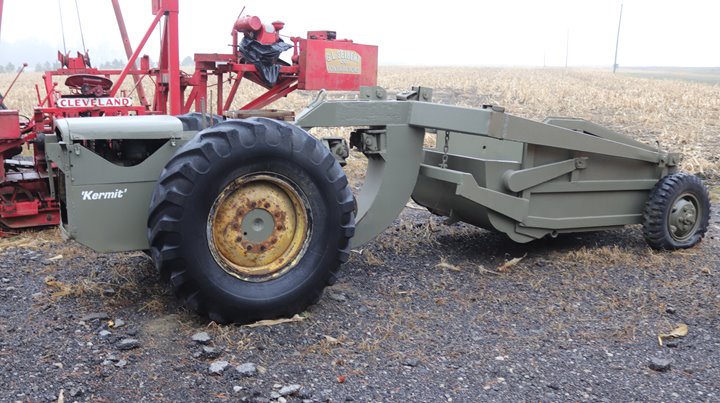
Author's photo.
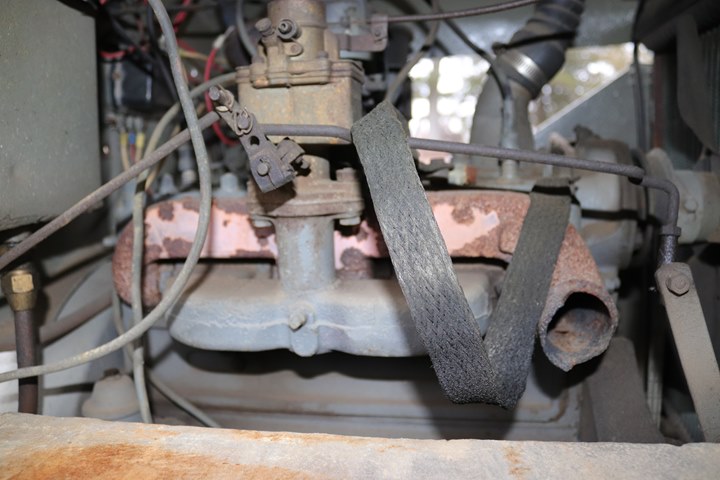
The Continental Y112 engine was normally
used in industrial applications such as fort lift trucks. Author's
photo.
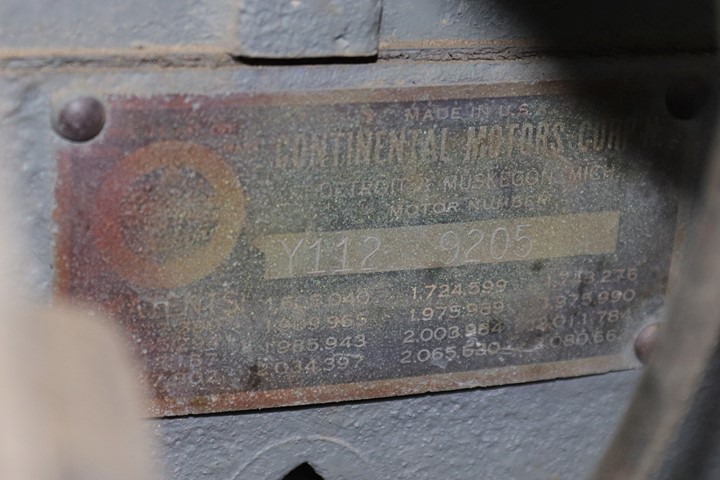
Author's photo.
Continental R-975 Radial Tank Engine:
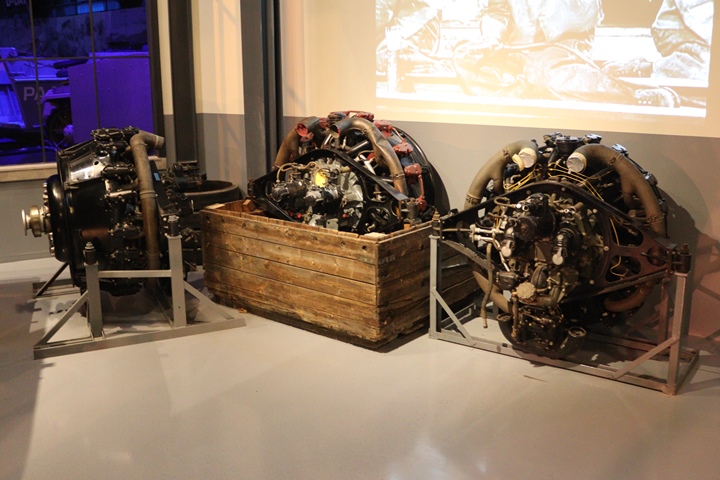
These three Continental R-975 engines are on display at the American Heritage
Museum in Hudson, MA. Author's photo.
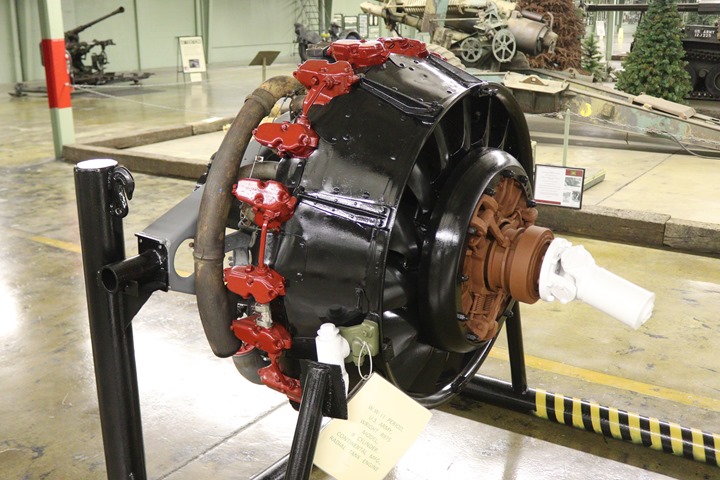
Inside the AAF Tank Museum in Danville, VA is this pristine restoration
of one of the 54,104 R-975 radial tank engines that Continental built
during World War Two. Author's photo.
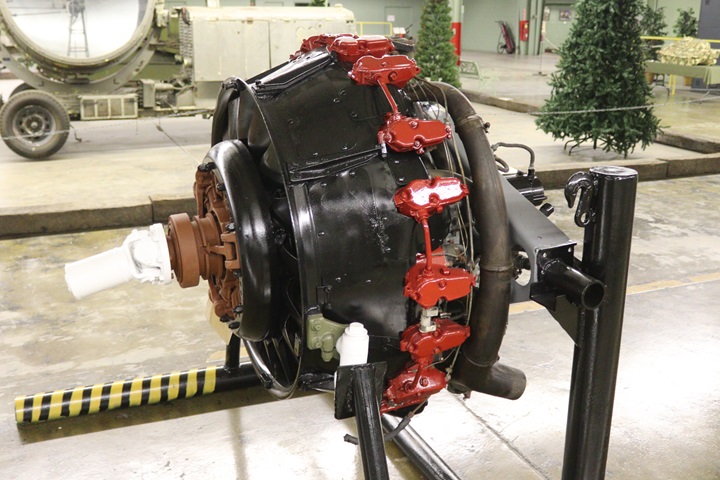
Author's photo.
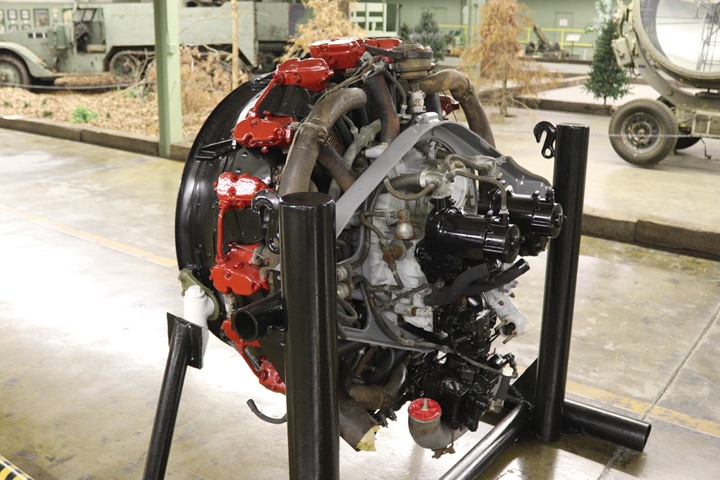
Author's photo.
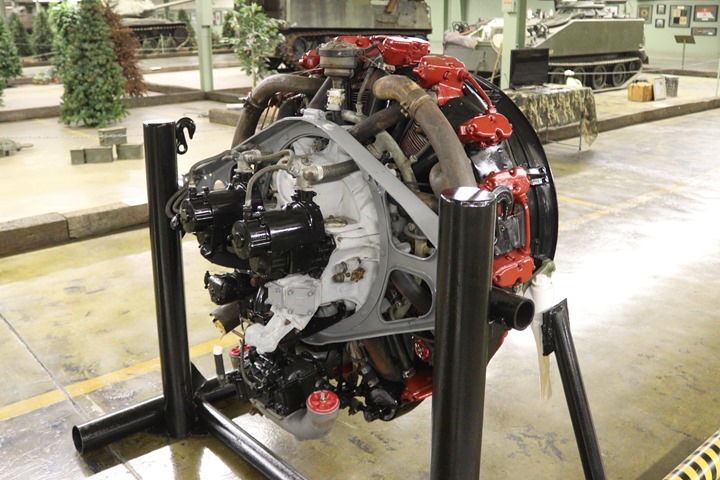
Author's photo.
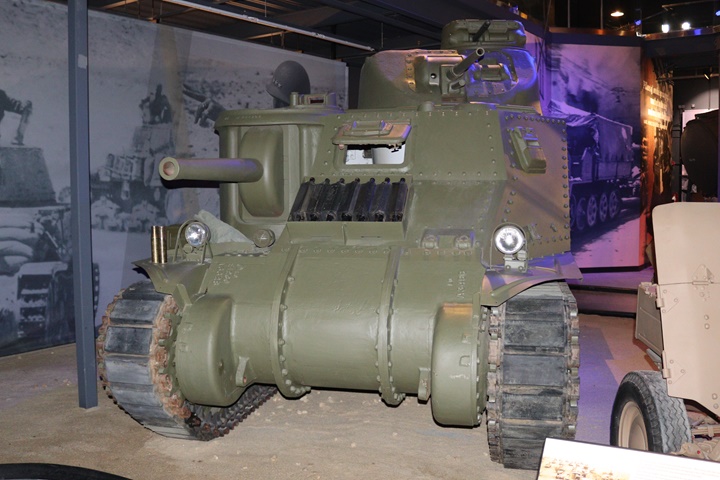
The M3 Lee/Grant series medium tanks were
the first to utilize the R-975 engine. The M3 served with both
British and American Forces in North Africa until being superseded by
the M4 Sherman medium tank series. The M3 continued to give
service with British forces in Burma until the end of the war. The
Continental R-975 engine was a world traveler during the war.
Author's photo from the American Heritage Museum in Hudson, MA.
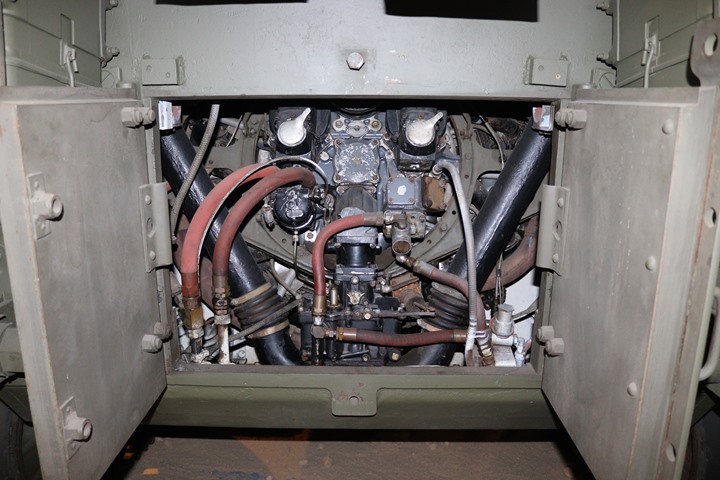
4,924 M3 Lee/Grant Tanks, 300 M3A1 Lee/Grant
Tanks and 12 M3A2 Lee/Grant Tanks were built with Continental R-975
engines. Author's photo.

Continental supplied the 9,707 engines for
the M4A1. Pressed Steel Company built this small hatch M4A1 in
July 1942, just four months after the company began production of the M4A1. Serial number 192 is the oldest known M4 series tank by
serial number still in existence. It is also the oldest Pressed
Steel-built M4A1 survivor. Author's photo taken at the Virginia
Museum of Military Vehicles.
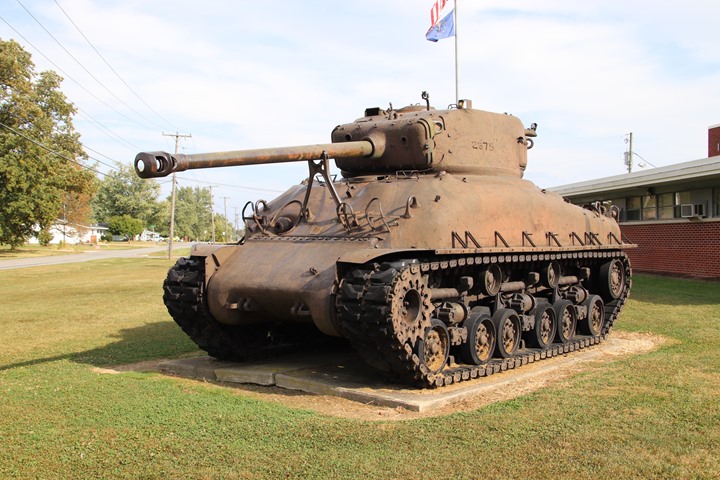
This M4A1(76)HVSS was built by Pressed Steel in January of 1945. This has all the
refinements of war experience in the tank. It has wider tracks, a
larger turret for the 76mm main gun, removal of the direct vision ports,
the more pointed transmission housing, wet ammunition storage and the 76
mm main gun. The Sherman tank had been a work in progress during
World War Two. This is Serial Number 67984 and it is on display at
the National Guard Armory in Huntington, IN. Author's photo.
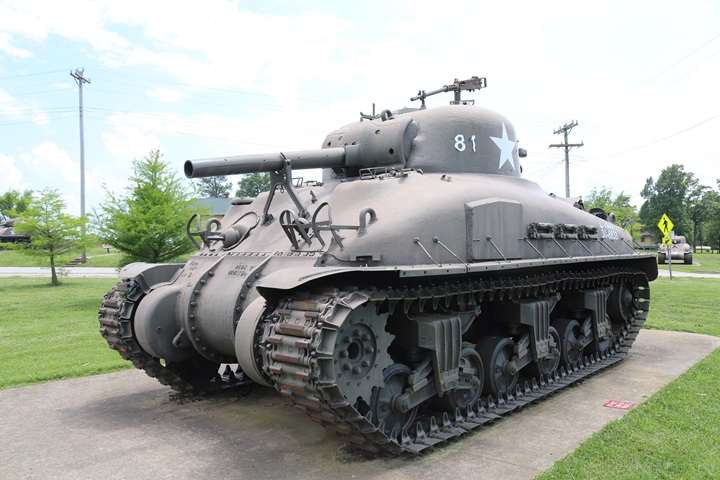
This one of only nine
M4A1s built by the Lima Locomotive Works during World War Two that
survive today. A total of 1,655 were built by the company.
Author's photo taken at the Fort Leonard Wood Museum complex.
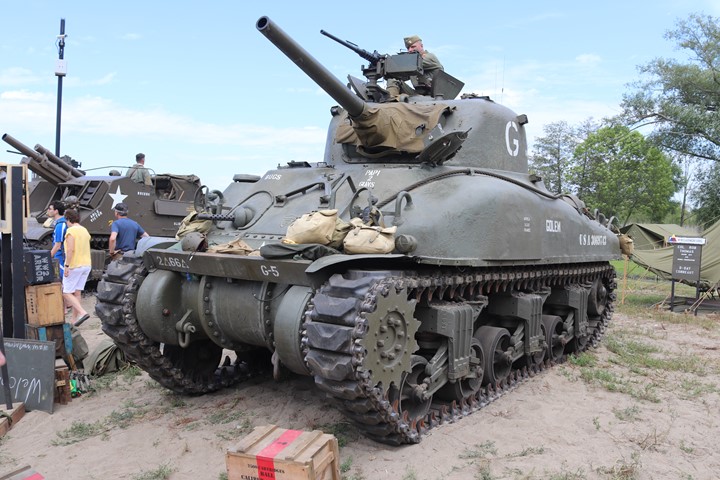
Montreal Locomotive Works built 188 M4A1
versions of the tank named Grizzly. This one
is owned by WW2 Armor in Osteen, FL. Author's photo.
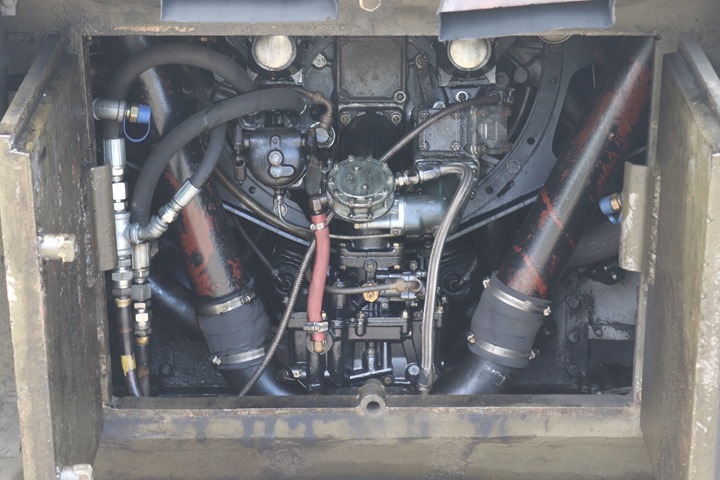
The back doors were open for inspection of
the Continental R-975 engine in the Grizzly. Author's photo.
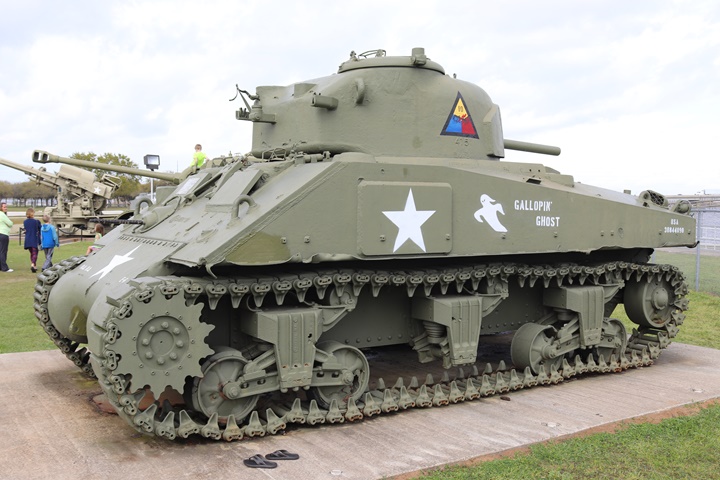
8,389 M4 Sherman tanks were built by several
companies for the war effort. This Pressed Steel
M4E9(75) with Continental R-975 engine is on display at the USS Alabama
in Mobile, AL. Author's photo.
-fortbenning-2018-107w-1.jpg)
M4 Alco Serial Number 3949 April 1943 was
built in April 1943 with a Continental engine. It is part of the
U.S. Army Armor and Cavalry Collection at Fort Benning, GA.
Author's photo.
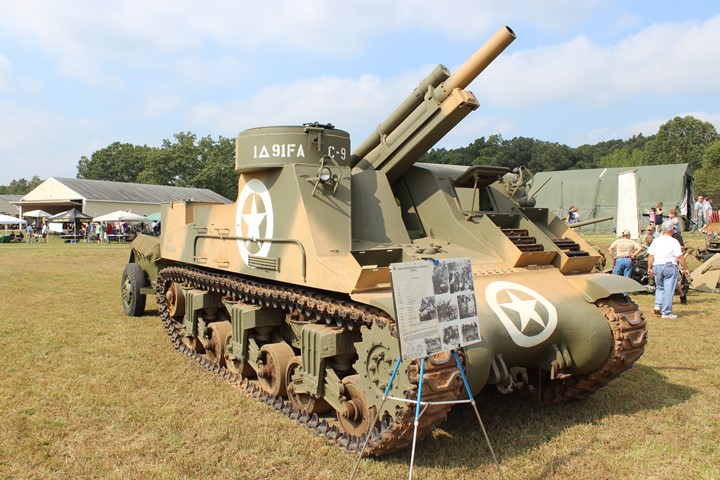
A total of 3,490 M7 105mm Howitzer Motor Carriages
were built by Alco and Federal Machine and Welder during World War Two.
This version of the M7 was powered by the R-795. This one is owned
the Virginia Museum of Military Vehicles and was built by Alco in November 1942.
It is
Serial Number 1364. Author's photo.
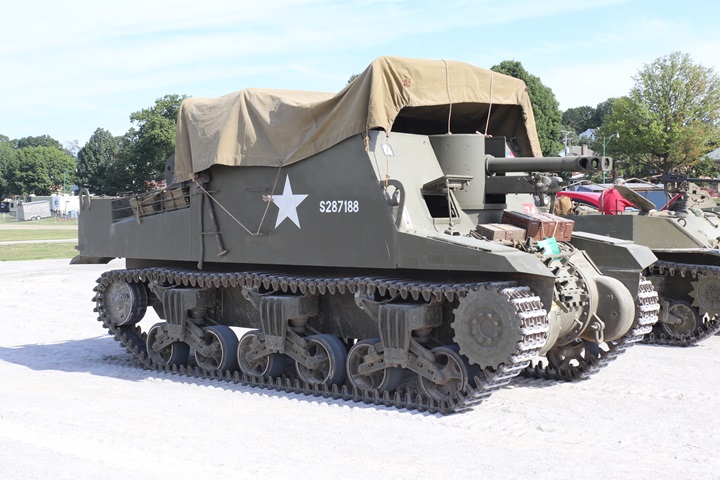
The Sexton was the Canadian version of the
American M7 but was armed with a 25-pounder gun. The driver was
located on the right side of the vehicle. It too was powered by a
Continental R-975. This Sexton is part of the collection of the
Wheels of Liberation located in New Oxford, PA. The very nice
restoration includes an all-weather tarp, which is a nice addition to
the vehicle. This was on display at the 2019 MVPA convention.
Montreal Locomotive Works produced 2,150 during the course of World War
Two. Author's photo.
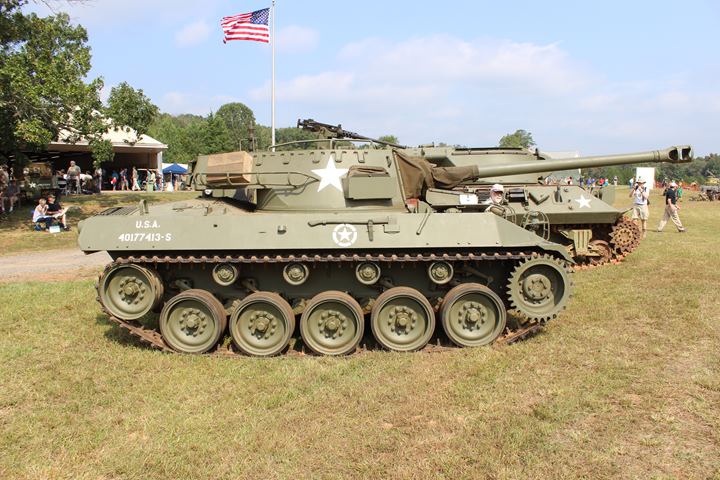
The Buick-built M18 Hellcat was the fastest
American armored track laying vehicle of World War Two, and it was
powered the Continental R-975 engine. The engines were built in
Detroit and shipped to the near north side of Flint for installation on
the Buick assembly line. Author's photo taken at the Virginia
Museum of Military Vehicles.
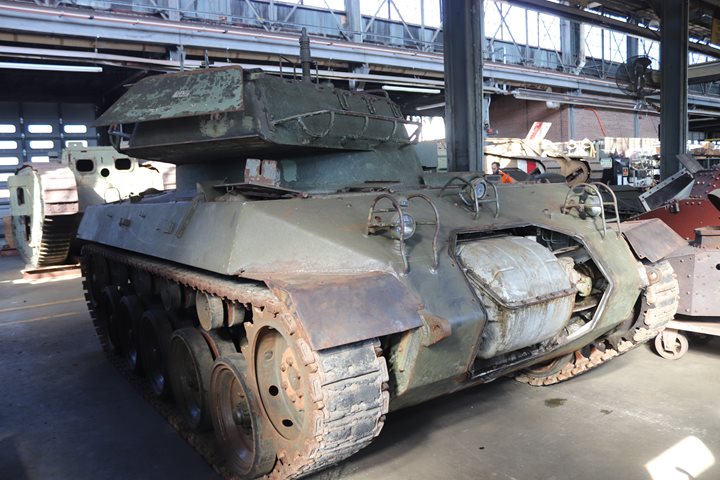
This M18 is one of 2,507 built and is part
of the collection of theU.S. Army Armor and Cavalry Collection at Fort Benning,
GA. When photographed by the author, it was undergoing
restoration. Author's photo.
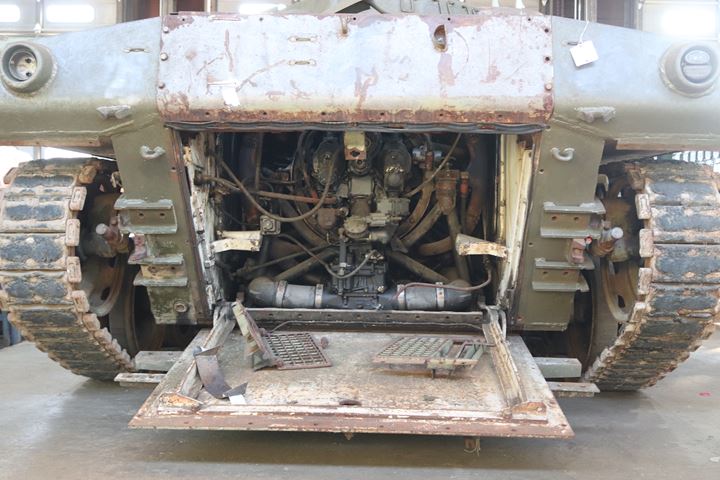
Buick engineers designed the Hellcat so that
the Continental R-975 engine could slide out of the back for easy
maintenance. Author's photo.
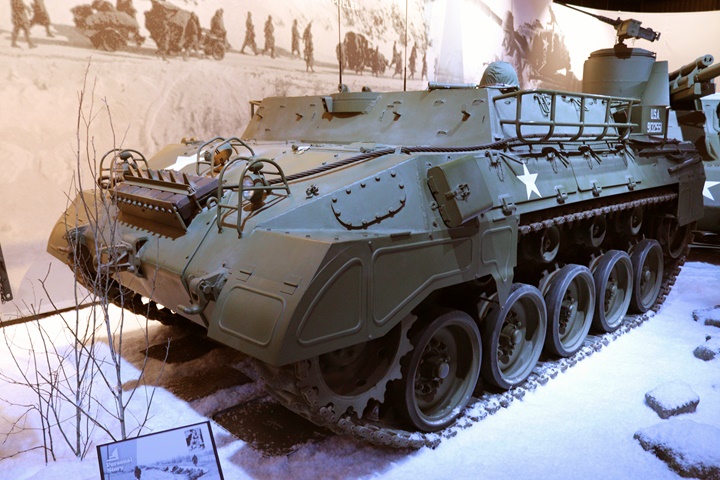
Fisher Body, under sub-contract to Buick,
rebuilt 600 M18s into M39 cargo carriers. Fisher Body also built
forty brand-new M39s. All had the Continental R-975 engine.
Author's photo from the American Heritage Museum in Hudson, MA.
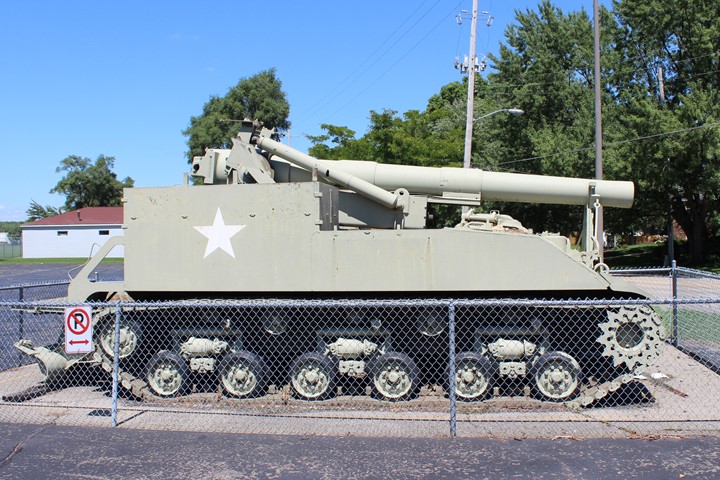
Twenty-four M43 203mm Howitzer Motor Gun
Carriages were produced by Pressed Steel at the end of World War Two.
The Continental R-975 engine was the power plant for the vehicle.
Author's photo.
Continental W-670 Radial Engine:
The W-670 radial engine built by Continental is most identified with the
M3 light tank. In fact, it had several other important
applications that assisted in winning World War Two for the Allies.
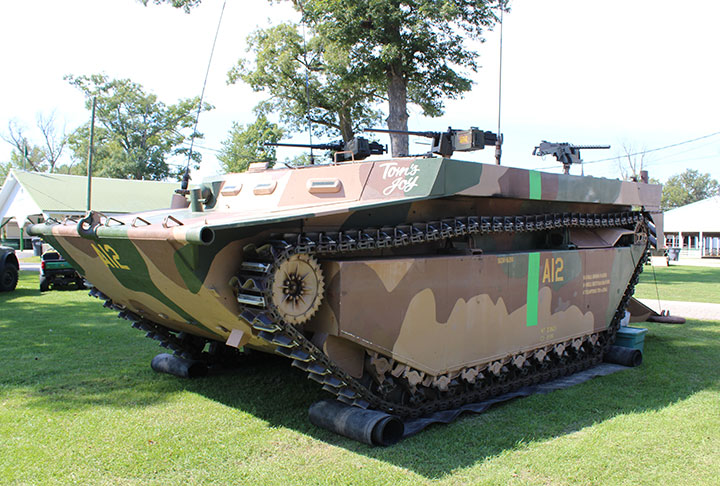
The W-670 was used in both the LVT-2 and
LVT-4. This LVT-4, was on display at the Portland, IN MVPA
gathering in September 2015. 8,351 LVT-4s were built during World
War Two. Author's photo.
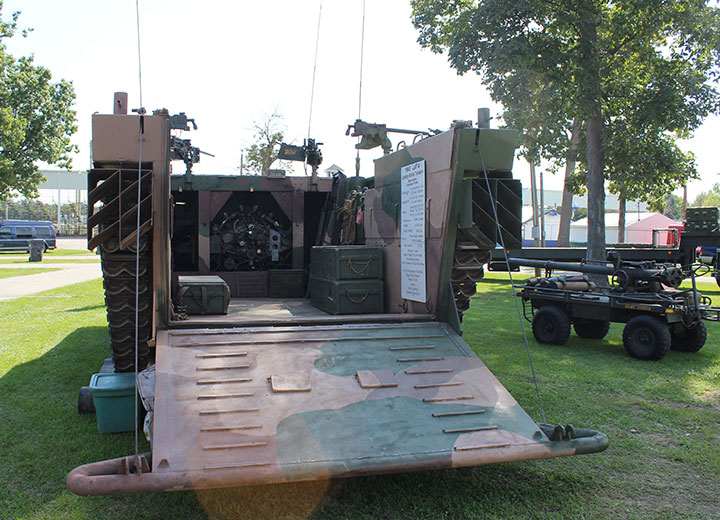
A total of 14,163 LVTs of all types
were built with Continental engines. Author's photo.
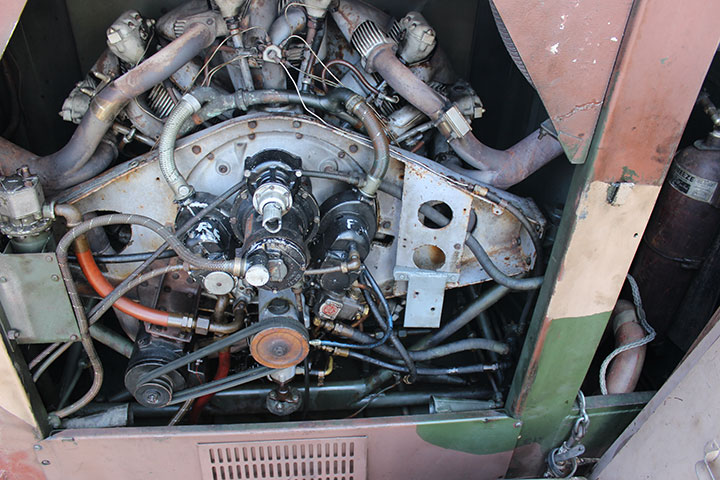
The Continental W-670 engine was mounted
right behind the driver's station. This allowed for the ramp to be
installed in the rear. In the LVT-2 with the W-670 the engine was in
the back of the vehicle. Author's photo.
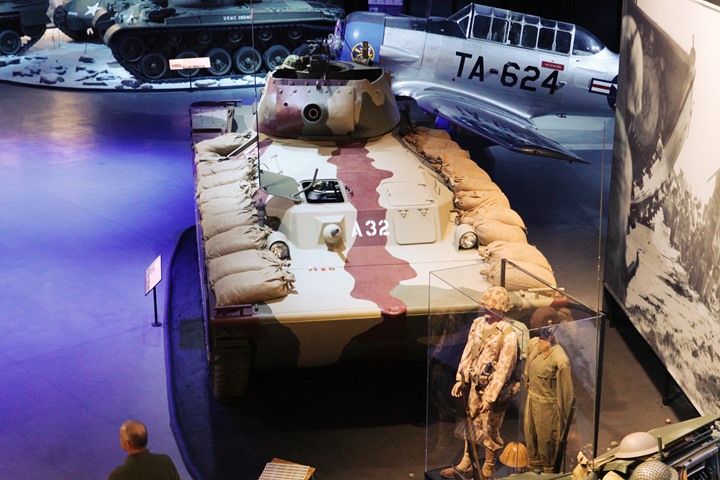
The LVT(A)-4 was the fire support version of
the LVT-4 and came armed with a 75mm howitzer. Author's photo
from the American Heritage Museum in Hudson, MA.
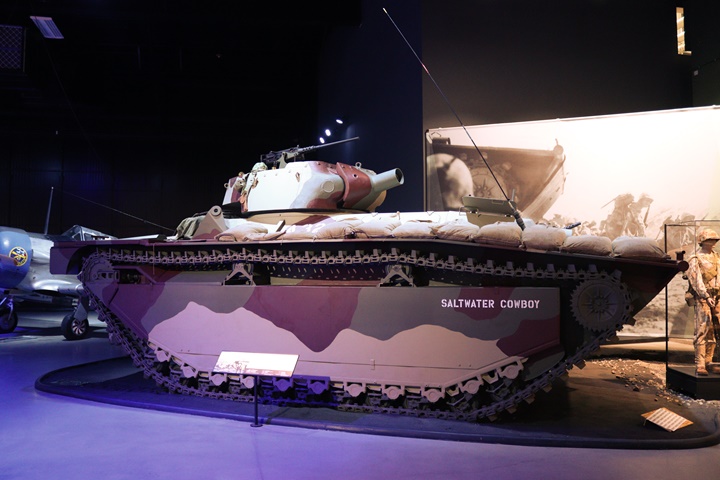
Author's photo.
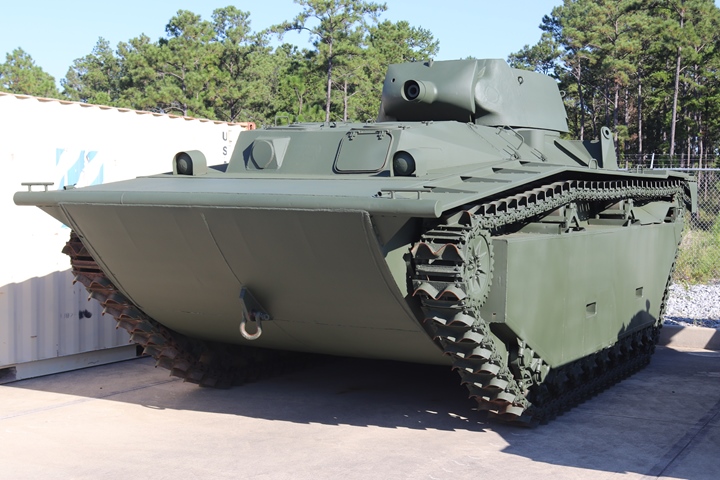
This LVT(4)-A is part of the U.S. Army Armor
and Cavalry Collection at Fort Benning, GA. Author's photo.
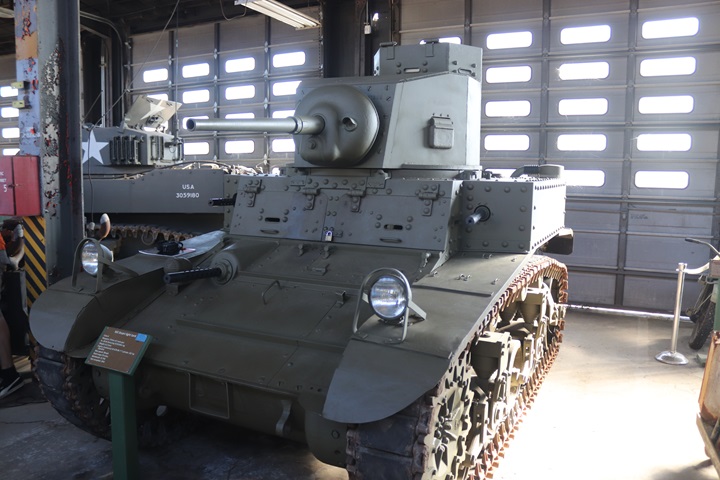
This is M3 Stuart light tank Serial Number
1343 and is part of the U.S. Army Armor and Cavalry Collection at Fort Benning,
GA. It was built in August 1941 by American Car and Foundry.
Author's photo.
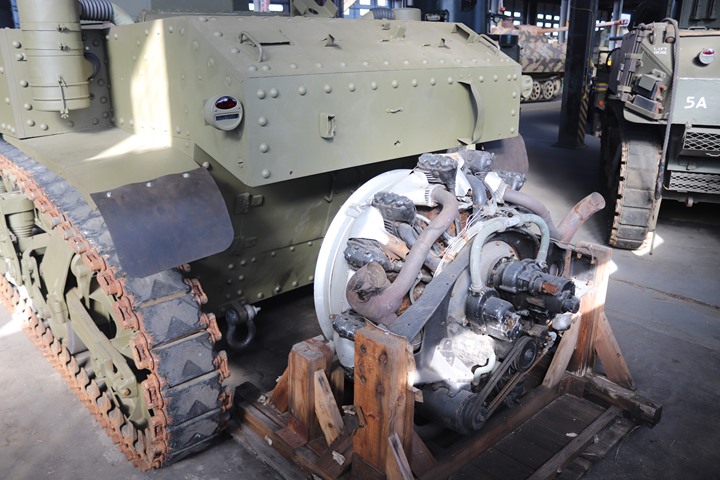
This is one of 12,363 Continental W-670
engines that the company provided for all models of the M3 light tank,
and is
on display behind the tank. Author's photo.
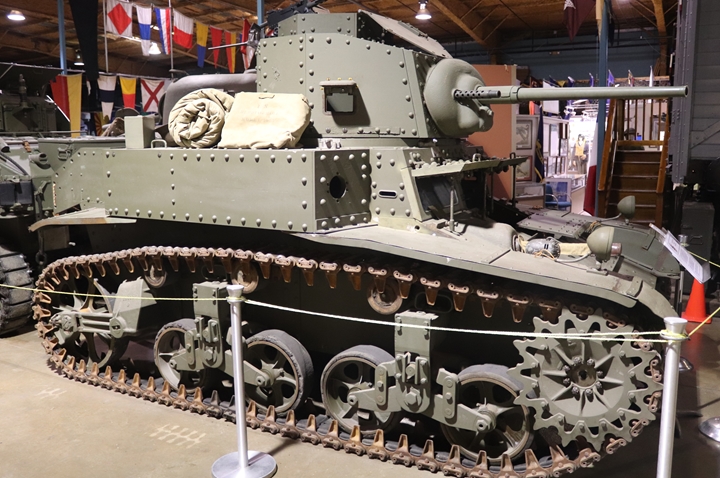
M3 Serial Number 156 is on display at the U.S. Veterans Memorial Museum
in Huntsville, AL. It has an early riveted turret. It was built in May 1941 by American Car and Foundry at its Berwick, PA
plant. Author's photo.
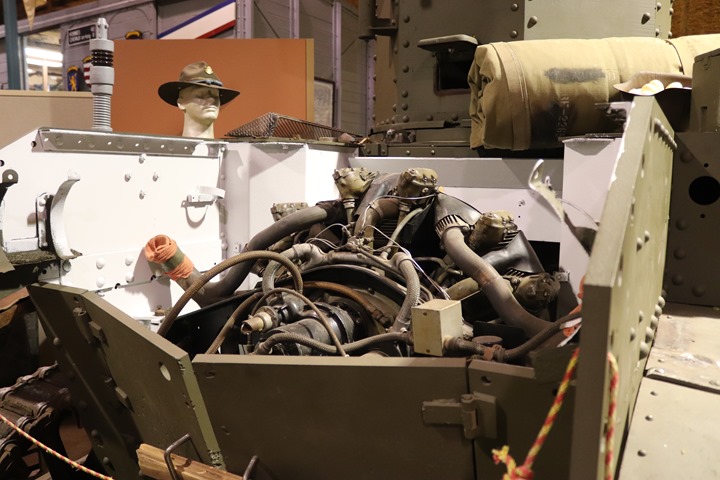
This and the next photo show how the
Continental W-670 engine was installed in the M3 Stuart. Author's
photo.
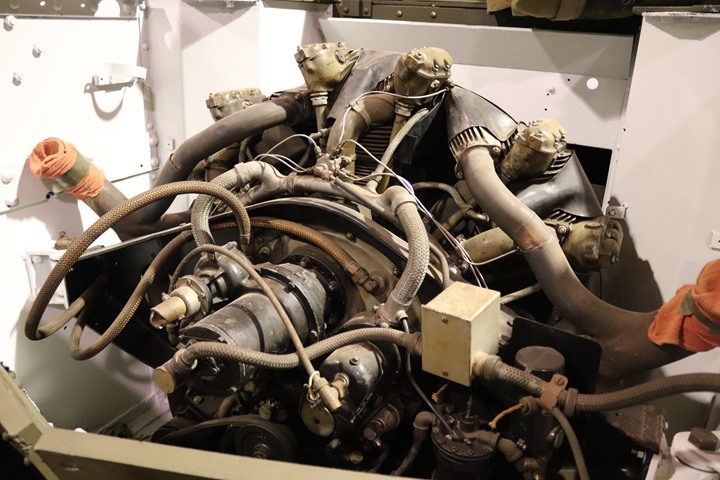
Author's photo.
R-600 Six Cylinder 230 hp Inline Engine: The M1 series 10-ton
wreckers and M5 series high speed tractors were powered by the
Continental R-600 inline engine.
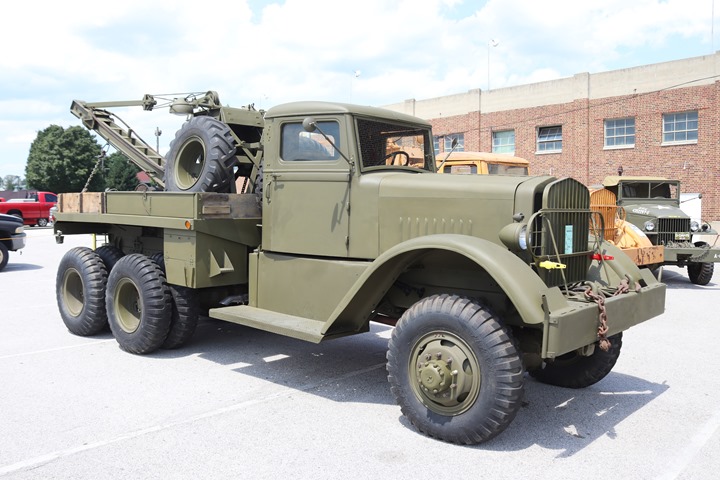
There were
5,765 M1 and M1A1wreckers built by Ward-LaFrance and Kenworth
during World War Two. Author's photo from the 2019 MVPA
Convention.
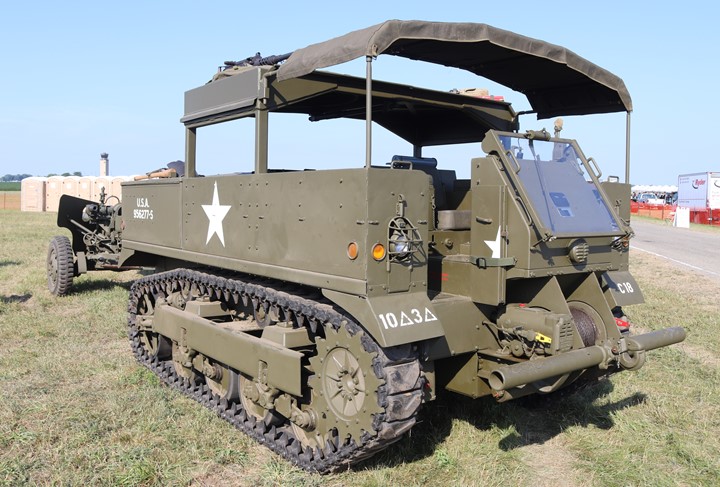
This newly restored International-Harvester
M5 High Speed Tractor was on display at the 2019 Thunder over Michigan
Airshow. 5,872 of the M5 series high speed tractors were built
with the Continental R-600 engine during World War Two. Author's
photo.
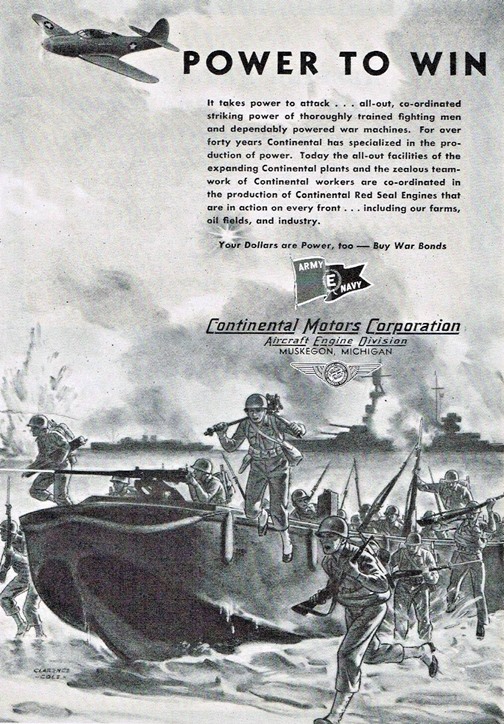
Continental history indicates the R-600
engine was used in landing craft. Use of this engine in landing
craft was limited, as there is only one other reference to its use for
that purpose in the literature. The R-600 may have been used very
early in the landing craft program when there was an engine shortage,
and limited to the LCP(L), as shown in this advertisement.
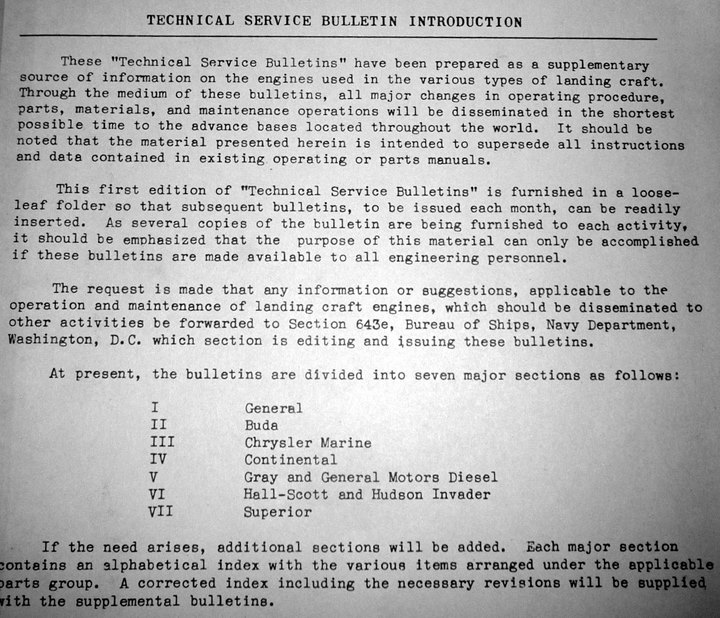
This is from a 1944 Technical Service
Bulletin manual. It is the only other source showing a Continental
engine being used in landing craft.
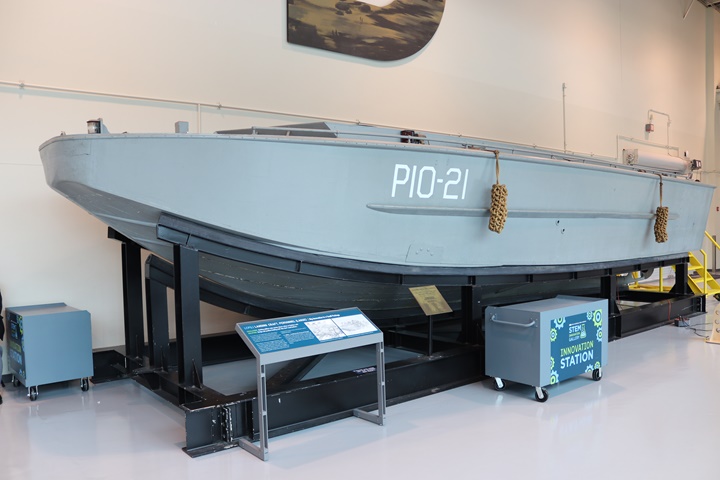
This is an LCP(L) similar to the one
in the advertisement above. Author's photo from the National WWII
Museum in New Orleans.
Rolls-Royce V-1650-7 Merlin
V12 Aircraft Engine: Production started in late
1944 and continued through May 1945.
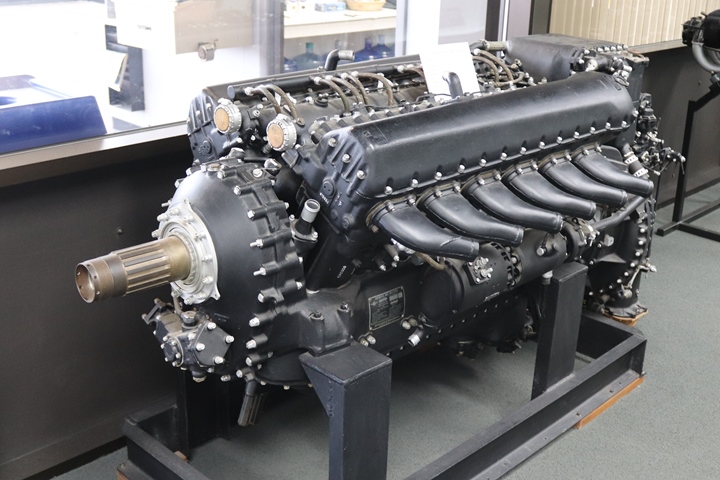
This Continental-built Rolls-Royce
V-1650-7 Merlin is on display at the Air Zoo Aerospace and Science
Experience in Portage, MI. Author's
photo added 10-13-2020.
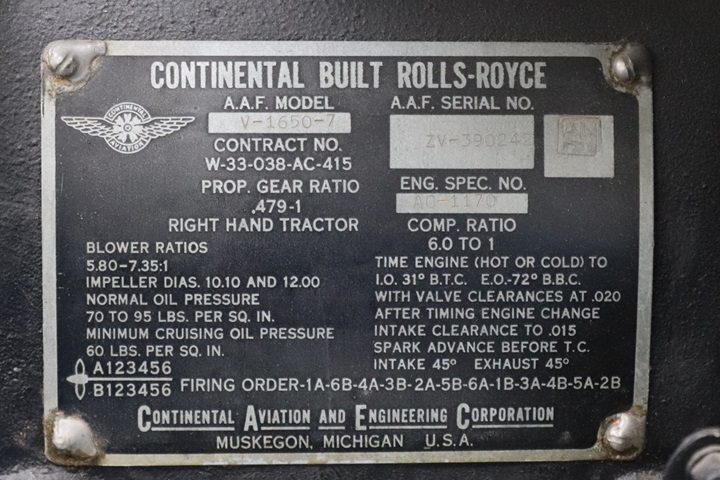
The V-1650-7 was used in the P-51D/K
Mustang. This engine is serial number ZV-390242. Author's
photo added 10-13-2020.
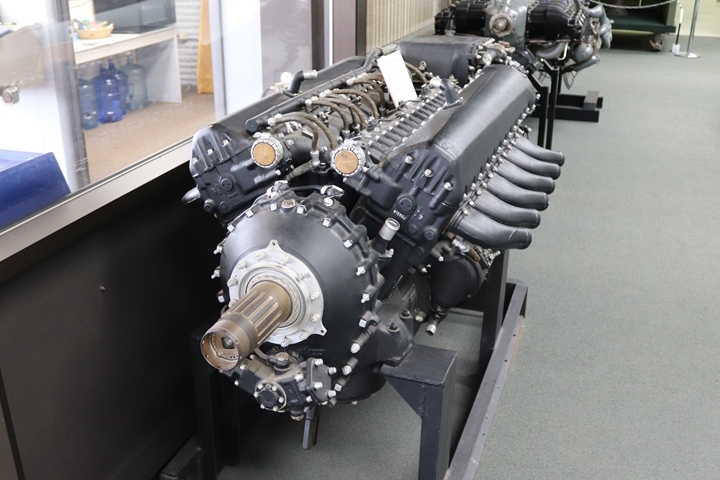
Author's photo added 10-13-2020.
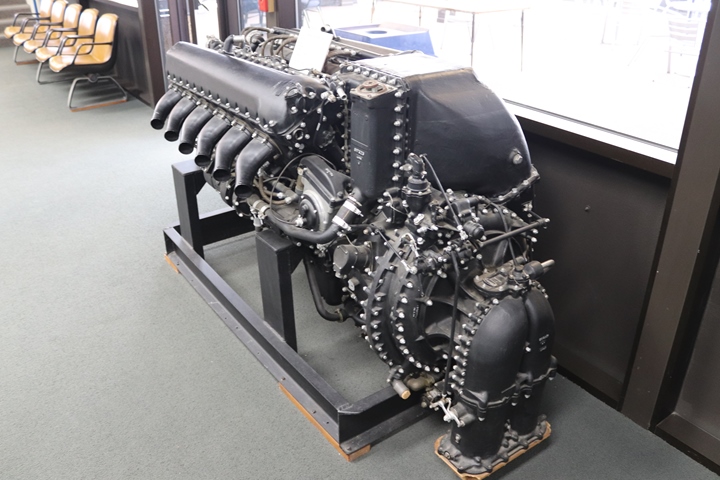
Author's photo added 10-13-2020.
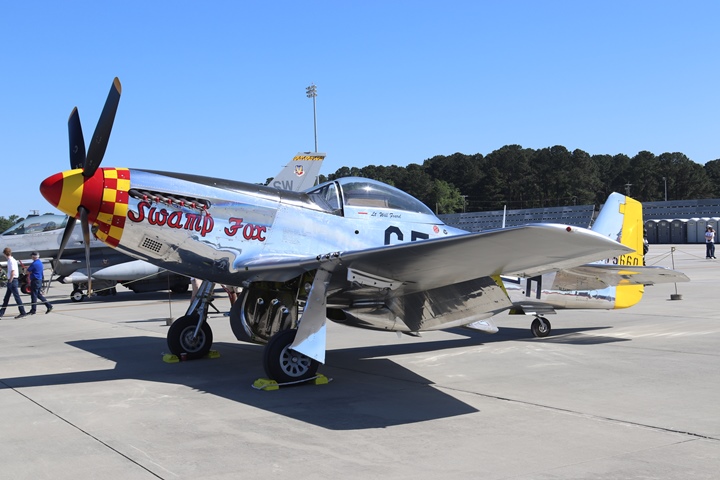
The North American P-51was the fighter of
choice for the Army Air Force in the last year of World War Two.
Continental was added as an engine supplier to make sure there
were enough engines to finish the end of the war. Author's photo.
I-1430 1000 hp Twelve Cylinder Aircraft
Engine:
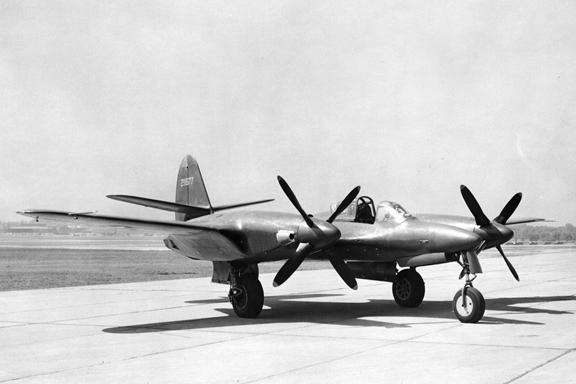
The McDonnell XP-67 "Bat" was the only know
application for the I-1430 engine. One burned from an engine fire
and work on the second one stopped when it was realized the aircraft had
no advantages for the current fighters already in service with the Army
Air Force.
R-1340 Radial Aircraft Engine:
The T-6/SNJ series advanced trainers were an important part of flight
training for both the U.S. Army and Navy during the war.
Continental was brought on as a supplier to make sure there were enough
engines to keep up with production of the aircraft.

Author's photo.
O-170/A65 Four Cylinder Opposed Cylinder
Aircraft Engines: Three different types of Liaison aircraft
used 9,222 of these versatile little engines during the war.
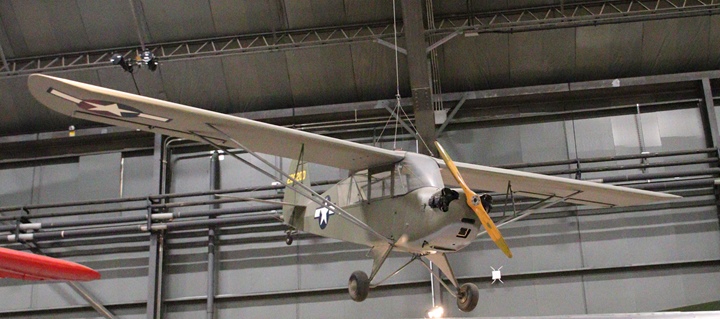
1,439
Aeronca L-3s were powered by the Continental O-170/A65 engine.
Author's photo.
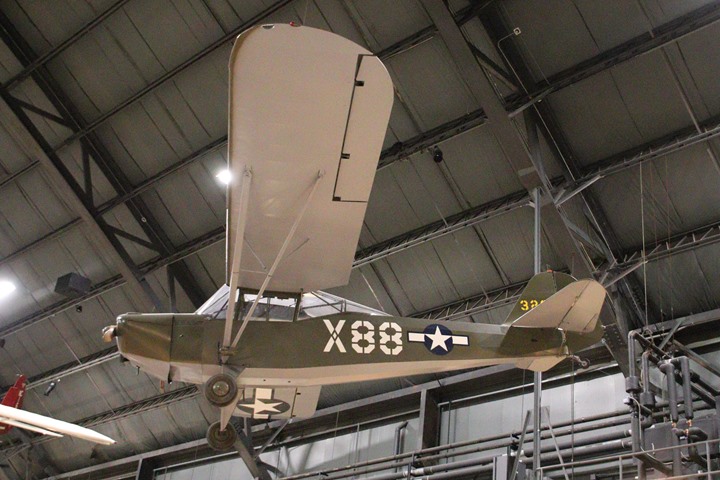
1,942
Taylorcraft L-2s were powered by the Continental O-170/A65 engine.
Author's photo.
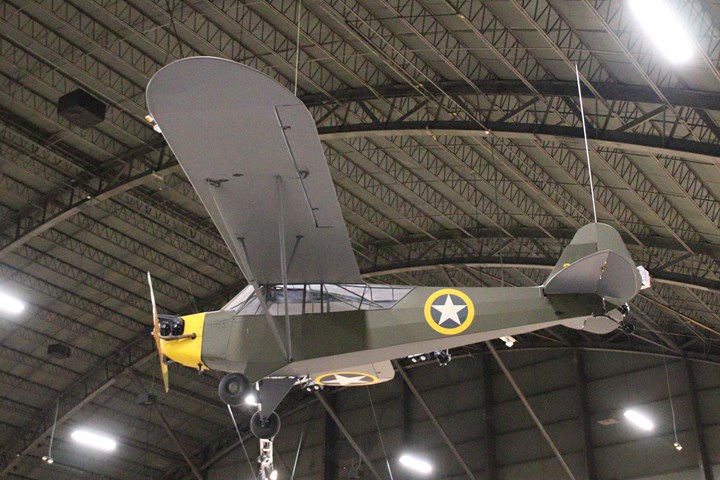
5,611
Piper L4s were powered by the Continental O-170/A65 engine.
Author's photo.
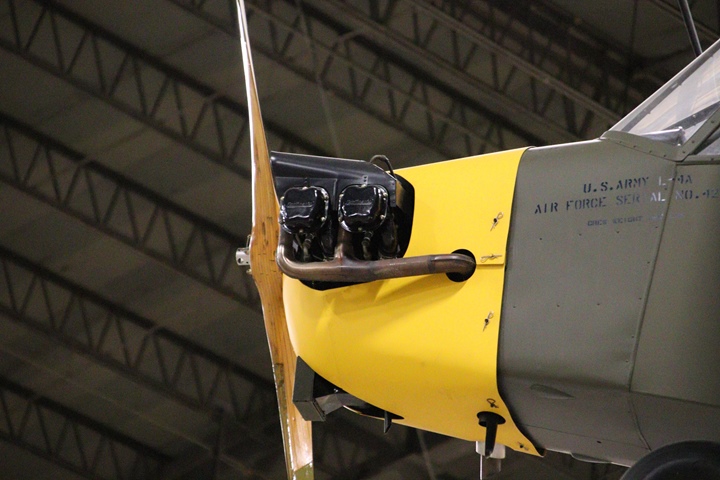
Author's photo.
R-670 220 hp
Radial Aircraft Engine: 3,519 Boeing PT-17s were
built with this engine.
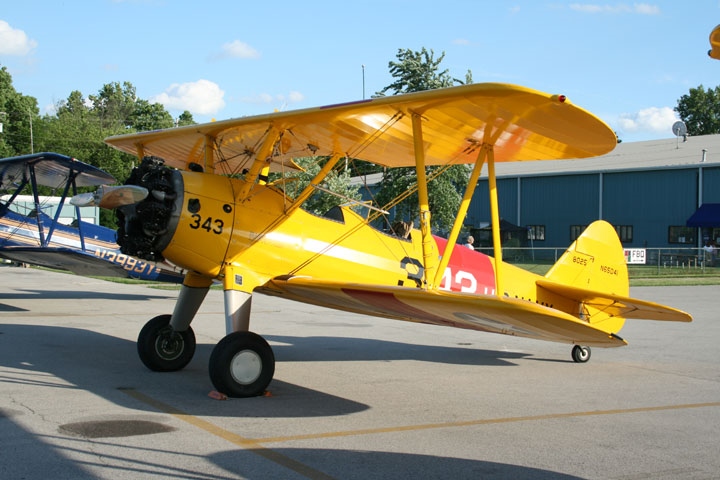
Author's photo.
Post-World War Two: After the war,
Continental Motors would continue to supply a variety of of tank and
aircraft engines until the end of the Vietnam War. It also built
engines for helicopters, civilian aircraft, and jet engines for the USAF
T-37 trainer. This is in itself a huge topic, but is beyond the scope of
this webpage. However, we will look at the most important post-war
tank engine that Continental produced for the U.S. Armed Forces.
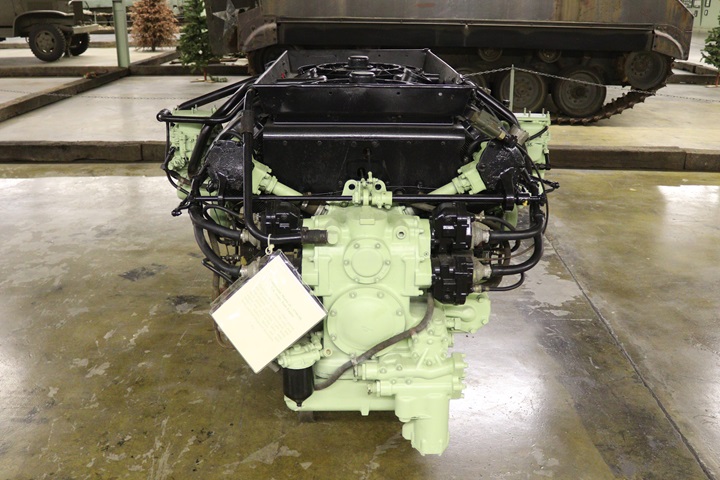
"What goes around comes around," as the
saying goes, and the Continental AV-1790-5B on display at the AAF Tank
Museum in Danville, VA is a prime example of this. During World
War Two, the Ford GAA V-8 engine replaced the Continental R-975 as the
preferred power plant in the Sherman tank. At the end of the war, Ford produced a different version of the GAA
for the M26 Pershing Heavy Tank. This was the GAF engine which was still a V-8
producing 500 hp. It had a lower profile than the GAA so it would
fit into the engine compartment of the M26. While the 500 hp was adequate for the 32-ton
Sherman, it was underpowered for the 46-ton M26 Pershing.
The U.S. Army had never really had an engine
designed specifically for use in tanks. It looked to Continental to
develop such an engine. The company responded with a series of
air-cooled engines of various displacements and configurations, the
AV-1790 at 810 hp being the one that would power many American tanks up to
the introduction of the M1 Abrams. Author's photo.
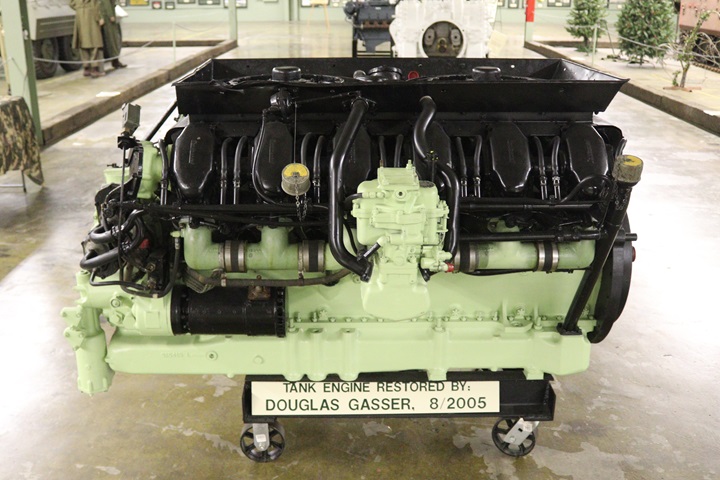
Author's photo.
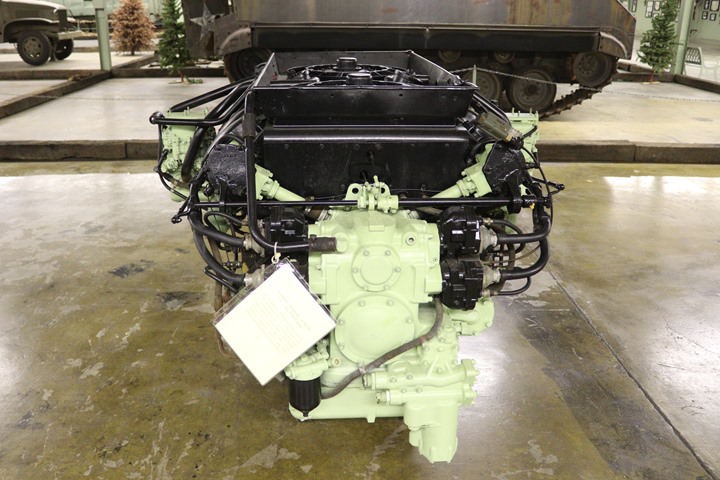
Author's photo.

Author's photo.

Author's photo.
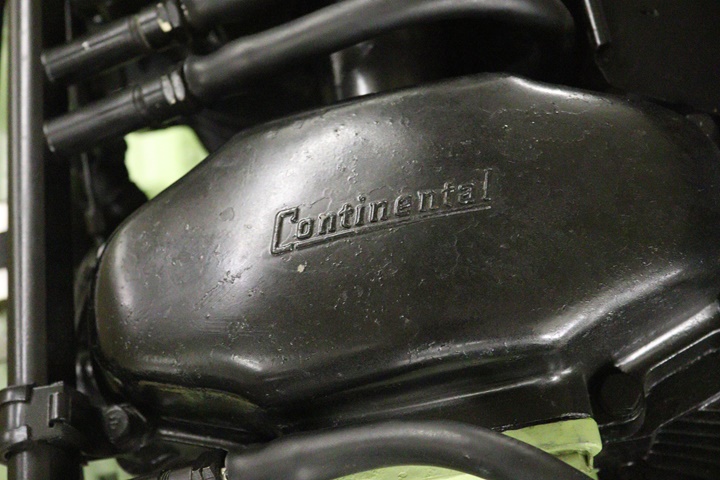
Author's photo.
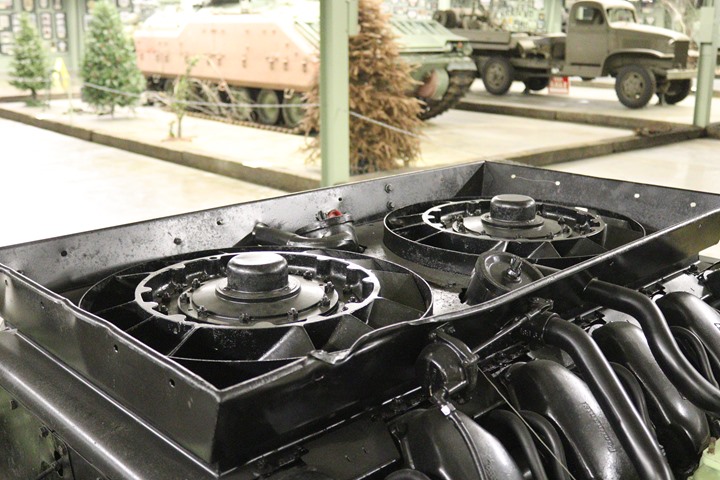
Author's photo.
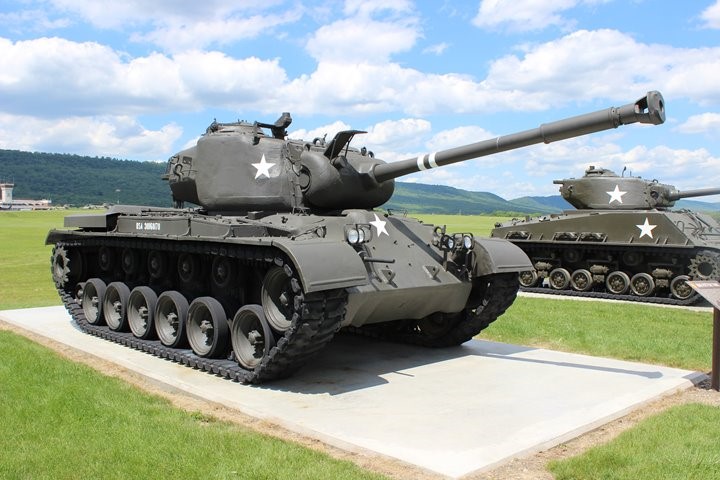
The first application of the Continental
AV-1790 was replacing the Ford GAF in the M26, resulting in the
M46. This M46 is on display at Fort Indiantown Gap, PA.
Author's photo.
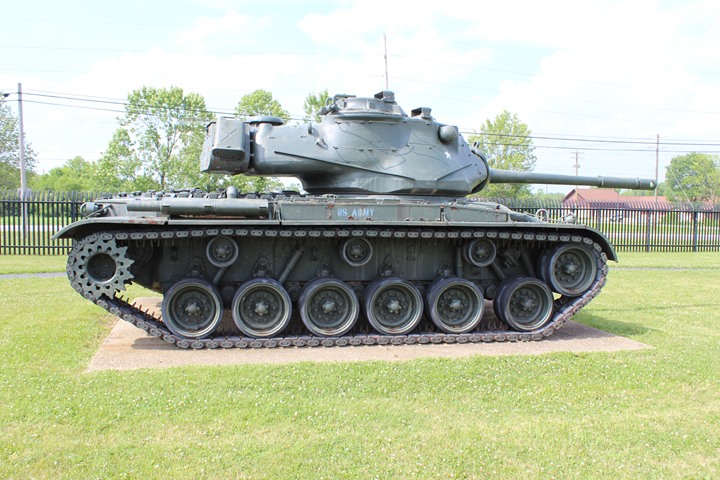
This M47 on display at Camp Atterbury, IN
was powered by the Continental AV-1790. It is one of 8,576 produced.
Author's photo.
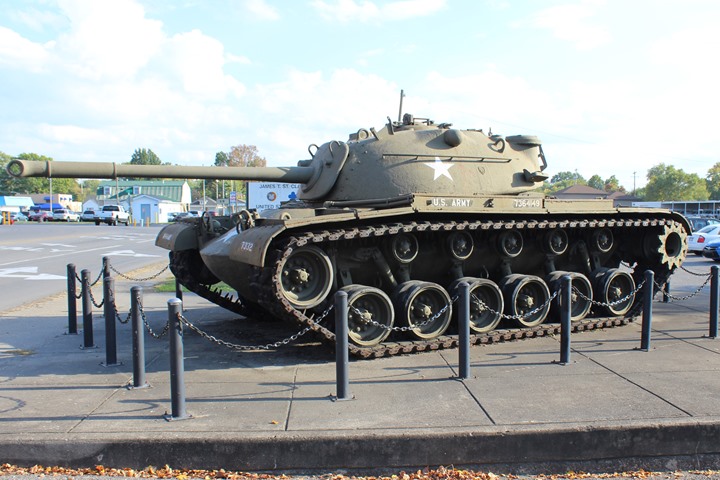
The AV-1790 was the engine originally
installed in the M48 Patton tank. Continental developed a diesel
version of the engine that was designated the AVDS-1790 and retrofitted
it into M48A1s like this one on display at the Army Reserve Center in
Jeffersonville, IN. The new diesel-powered designation for the M48
was the M48A3. It was this version that served with the U.S. Army
in Vietnam. There were 11,703 M48s built by Chrysler, Fisher Body
and Ford. Author's photo.
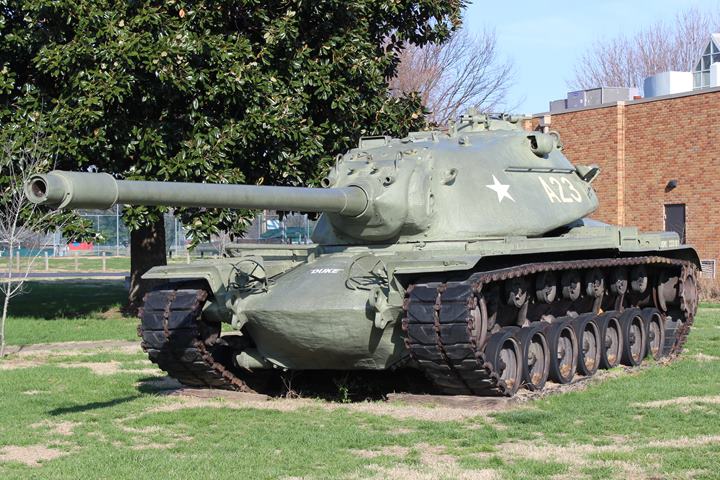
Chrysler built 300 M103 Heavy Tanks at its
Newark, DE tank arsenal from 1950-1953. They were powered by the
Continental AV-1760 gasoline powered engine. In 1964 153 of them
were converted to the AVDS-1790 diesel engine. This one at the
Shively, KY public library is a diesel conversion. Author's
photo.
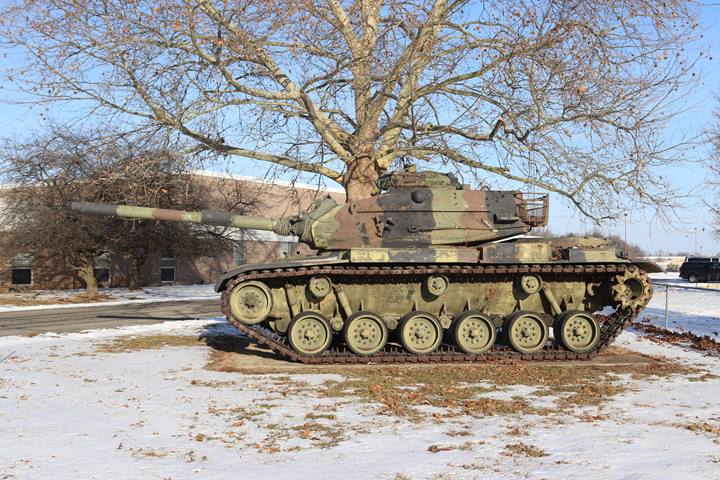
The end of the line. The M60 was the
last tank that used a Continental engine, ending a long and important
series of tanks that were used in the American arsenal dating from 1932.
The M60s were equipped with the AVDS-1790 diesel engine. When the
last of 15,000 came off the assembly line at the Detroit Tank Arsenal in
1983, an era ended. There would be no more Continental-powered
tanks built. This M60A1 is on display at the Terre Haute, IN
National Guard Armory. Author's photo.
It wasn't that Continental didn't try to
continue as the engine supplier for the M1 Abrams main battle tank.
It teamed up with General Motors with a proposed tank that would have
been powered by a Continental ACVR-1360-2 supercharged 1,500 hp diesel
engine. In the end, the Chrysler/Lycoming entry with a turbine
engine won the competition.
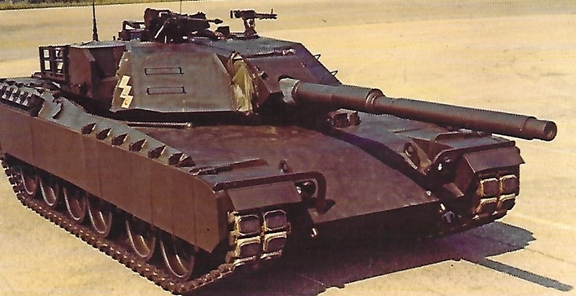
This is the General Motors/Continental
Motors entry for the new main battle tank. The XM1 had an Allison
X-1100 transmission. Allison was the GM Division lead division for
General Motors in the competition.
|


































-fortbenning-2018-107w-1.jpg)














































